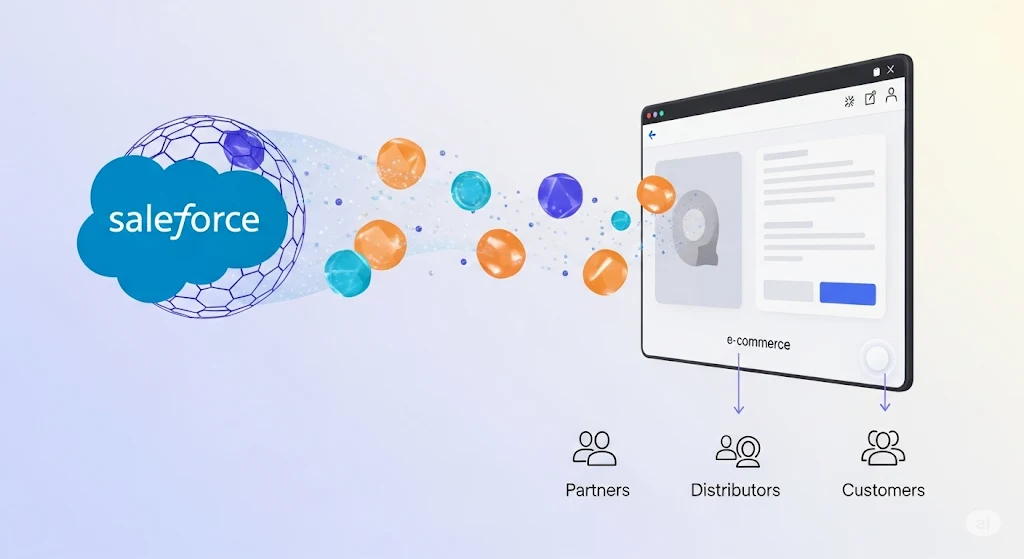- info@techkasetti.com
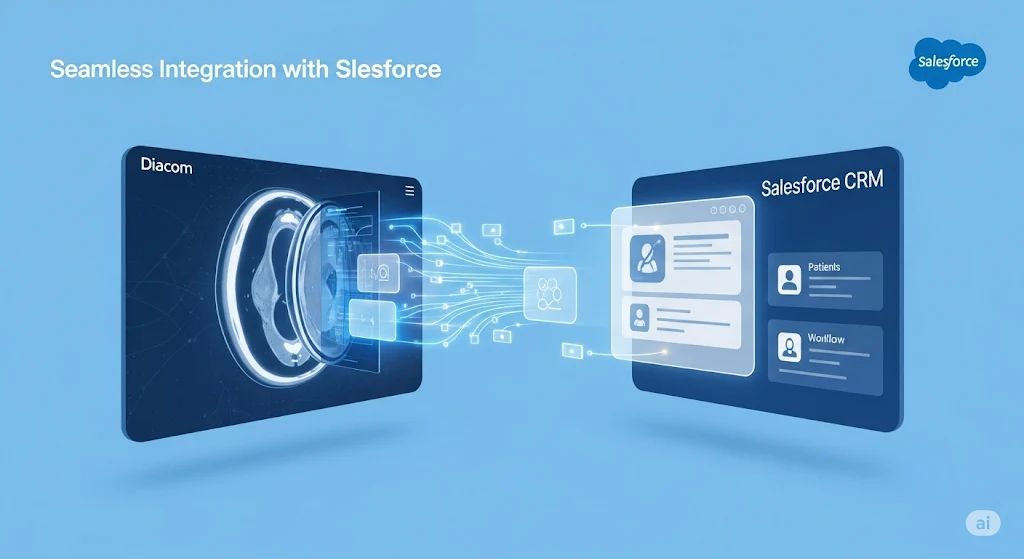
Diacom Integration
Diacom Integration with Salesforce
The Open Health Imaging Foundation (OHIF) Viewer is an open source, web-based, medical imaging platform. It provide a core framework for building complex imaging applications.
Key features:
- Designed to load large radiology studies as quickly as possible. Retrieves metadata ahead of time and streams in imaging pixel data as needed.
- Leverages Cornerstone 3D for decoding, rendering, and annotating medical images.
- Works out-of-the-box with Image Archives that support DICOMWeb. Offers a Data Source API for communicating with archives over proprietary API formats.
- Provides a plugin framework for creating task-based workflow modes which can reuse core functionality.
- Beautiful user interface (UI) designed with extensibility in mind. UI components available in a reusable component library built with React.js and Tailwind CS
While grasping the basic concept of DICOM is simple enough, the process of actually using DICOM-related hardware and software needs greater technical insight. This study explores the various stages of the DICOM medical image workflow.
DICOM medical images undergo different processes—acquisition, storage, editing, secondary processing, sharing and printing, and retrieval. All aspects of this workflow are managed by a central server, referred to as PACS.
What is PACS?
At the heart of the entire DICOM workflow process is PACS. PACS stands for Picture Archiving and Communications System. PACS basically acts as a host that stores DICOM-related imaging data and integrates functions related to these images. You should think of PACS as the central coordinator where multiple processes meet and integrate. An ideal DICOM PACS software should be able to integrate the source equipment, workstations, sharing networks, retrieving and printing equipment.
How has PACS helped improve Digital Imaging Workflow?
In earlier days, medical images acquired by both manual and digital means were printed out as films, or else stored on external devices such as CDs and DVDs. The development of PACS has resulted in a faster and more reliable method of handling medical images.
With PACS, the radiologist can manage time better, as images can literally be accessed from anywhere, at any given point of time. All this contributes to better patient outcomes.
What are the Components of PACS?
PACS comprises a number of components essential for the DICOM workflow. These are described below:
The source
The source of all medical images is the hardware equipment that generates them. The detector within the imaging equipment recognizes the image and transmits it in a digitized format to the computer on which it can either be viewed at once or stored for viewing at a later date. All images are acquired and stored in the DICOM format.
Storage of medical Images
Once the images have been acquired from the source, they need to be stored safely. The DICOM server software acts as a filing system to store all images in an organized manner. Images from the DICOM server can either be sent to the digital workstation for interpretation or printed. Some advanced DICOM server software applications also allow direct uploading and online sharing of images.
The DICOM workstation
As the name suggests, the DICOM workstation is the area that radiologists use to view and interpret images. The DICOM workstation software is of two types. The first type, called proprietary software, comes along with the source equipment and is usually created by the same manufacturer. This DICOM workstation software must necessarily be used at the same location as the source equipment. The second kind of DICOM workstation software is third-party software, which can be used at a location remote to the source equipment. This kind of software is especially useful in hospitals which have a high inflow of patients coming in for medical imaging examinations. Images can quickly be acquired for each patient, and can be accessed and interpreted by the radiologist at a later date. A third-party DICOM application must be capable of receiving DICOM images from the PACS server. Therefore, this would require DICOM receiver software to be built into the application. DICOM receiver software will allow the radiologist to access images from either the PACS server or from external drives such as CD/DVD drives.
A DICOM workstation software, in addition to opening and receiving capabilities, may have additional features that can help the radiologist improve diagnostic accuracy and track disease progression . Some of these features include
- Image enhancement: DICOM workstation software allows radiologists to enhance the quality of the images by altering parameters such as brightness, color and contrast. This feature is usually available on even the most basic DICOM viewers.
- Image altering and reconstruction: Advanced DICOM workstation software allows users to manipulate the images that have been originally acquired, so that new information can be gained from the medical images. For instance, the images of a particular anatomical region that have been taken in three planes (axial, coronal and sagittal) can be combined to form a three-dimensional reconstructed image. This gives the radiologist better anatomical orientation. The reconstructed image can also be sliced again, at different planes and angles as compared to the originally acquired images. This technique is referred to as Multiplanar Reconstruction (MPR).
- Localizing the region of interest: Areas that absorb maximum or minimum amount of energy can be identified as Maximum Intensity projections (MIP) and Minimum Intensity Projections (MINIP). Identifying these areas may help the radiologist quickly identify abnormalities.
- Generating reports: A few viewers even allow radiologists to generate reports based on their findings and export them to word processors.
Sharing DICOM files
- Exporting files: Medical images may be used for teaching and learning purposes. Sometimes, medical images may also be used in book and journal publications. Medical images in the DICOM format are large and often cannot be used directly. It is necessary to compress the file and convert it into another imaging format. Several imaging file formats available. The JPEG format is most commonly used, and DICOM files can be compressed to a very small size using this format. However, JPEG compression allows data to be lost and the original DICOM file cannot be recovered. Other file formats, like TIFF and PNG, allow recovery of the original file, but they can compress files to only a limited extent. JPEG is useful when one wants to use images in teaching, case presentations, or to present cases on the internet. The TIFF and PNG formats are better suited for book and journal publications.
- Anonymizing files:If the medical images are intended for research or are to be published on an open forum such as a website, it is ethically necessary to anonymize the files so that the medical image cannot be linked to a specific patient. Some DICOM applications allow anonymization by removing patient information from the file header.
DICOM printer software
Although printing of DICOM medical images is slowly being phased out, there are still instances where printed films can be useful. For example, when surgical procedures are being performed in remote locations (where the operating complex does not have access to the PACS server), it may be helpful to have the films on display. In these instances, a DICOM printer software may be used to aid in printing films from stored DICOM images. Apart from the DICOM printing software, a printer capable of printing DICOM images may also be required.
What are some Recent Developments for PACS?
- Web-based PACS
- With the advent of cloud-based storage, web-based PACS has become a reality. PACS need not be limited to a particular hospital or clinic. All medical images that are acquired at source can be uploaded on to the internet and stored in cloud. This has led to the development of a new off-shoot of radiology—teleradiology. Teleradiology allows radiologists to view images and provide diagnoses at remote centers.
- Integration of other information systems with PACS
- Apart from PACS, there are several other information systems that are in use in hospitals. The Radiology Information System (RIS) is designed to receive orders for medical imaging, generate bills for the same, and to deliver the final report as interpreted by the radiologist. The Hospital Information System (HIS) usually contains the patient’s complete electronic medical records and billing information. More advanced software systems enable integration of all the above information systems with PACS. This allows a complete record of patient information to be stored and made accessible to the clinician, who can then make better informed decisions regarding the medical care of a patient.
Suitable Software for the entire DICOM-PACS Workflow
To adequately cover the entire DICOM-PACS workflow, you need software that will help you receive the DICOM images from the source (DICOM receiver software), software that will help you view and edit the images (DICOM viewer), software that will help you store all the image data and retrieve it at will (DICOM server software), and software that will help you share and print your medical images (DICOM exporting software and DICOM printing software). Rather than using several software applications for these purposes, there are programs that fulfil two or more of the above needs. There are, by and large, two kinds of software applications that all radiologists must obtain:
DICOM viewing software
This software primarily allows users to view DICOM images that have been acquired. It usually comes with retrieving and printing capabilities, and some viewers support exporting of files as well. Advanced DICOM viewers have additional workstation features that permit editing and reconstruction of images. A few popular DICOM viewers available today include
- Dicoogle: Dicoogle is an open-source PACS archive that supports the storage and retrieval of DICOM files. It has an indexing/query engine that allows users to search for and retrieve DICOM studies. It can work across multiple platforms, including Windows, Linux and Mac OS.
- Orthanc: Orthanc is another open-source, lightweight DICOM application. It works across multiple platforms including Windows, Mac OS and Linux, and can turn any computer using one of these operating systems into a mini PACS server. It can also export DICOM data into the PNG format.
- SonicDICOM:This is a DICOM server software that also comes with a web-based DICOM viewer. It can be integrated to other DICOM viewers as well. The free version is a trial version and allows up to thirty studies to be saved, with no more than five web or DICOM connections at a time. It is compatible with Windows OS.
Of note, there are some very handy applications that combine both a DICOM viewer and PACS into a single software. Of these, PostDICOM ranks among the top. It has a powerful, easy-to-use DICOM viewer that offers all advanced imaging features, including MPR, MIP, MINIP and volume rendering. PostDICOM is among the first applications to offer web-based PACS for storing DICOM images. It allows exporting to multiple formats and sharing images is easier through cloud storage. So if you are looking to simplify your DICOM workflow, give PostDICOM a try!
Medical imaging storage technologies such as PACS are increasingly important as the volume of digital medical images grows throughout the healthcare industry and data analytics of those images becomes more prevalent.
Who uses PACS
While radiologists have predominately used PACS — radiology traditionally being the most prolific producer of X-ray images — PACS technologies have been incorporated into other departments, such as nuclear medicine imaging, cardiology, pathology, oncology and dermatology.
Medical images are taken and reviewed for clinical analysis, diagnosis and treatment as part of a patient’s care plan. The information collected can be used to identify any anatomical and physiological abnormalities, chart the progress of treatment and provide clinicians with a database of normal patient scans for later reference.
Having digital access to the most updated version of a patient’s medical images, clinical reports and history can expedite and improve care, lessening the likelihood of treatment and prescription errors and preventing redundant testing. Digital access can also improve patient safety and save both the healthcare facility and the patient time and money.
Development
Nearly all the major medical imaging equipment manufacturers and medical IT companies offer PACS. This system is used to store, retrieve, present and share images produced by various medical hardware modalities, such as from an X-ray, computed tomography (CT) scan, magnetic resonance imaging (MRI) and ultrasound machines.
The modern use of PACS can be attributed to DICOM (Digital Imaging and Communications in Medicine), which is a standard protocol for the management and transmission of medical images and related data. Digital medical imaging has become an integral part of radiology. Today’s radiologist needs to be familiar with the technical aspects of medical imaging. At the forefront of medical imaging technology is the DICOM standard. DICOM stands for Digital Imaging and Communications in Medicine. This is a set of standards framed by the American College of Radiology in association with the National Electrical Manufacturers Association.
DICOM ensures that medical images meet quality standards, so that the accuracy of diagnosis can be preserved. All imaging modalities, including CT, MRI and ultrasound must conform to the DICOM standards. Images that are in the DICOM format need to be accessed and used through special DICOM applications.
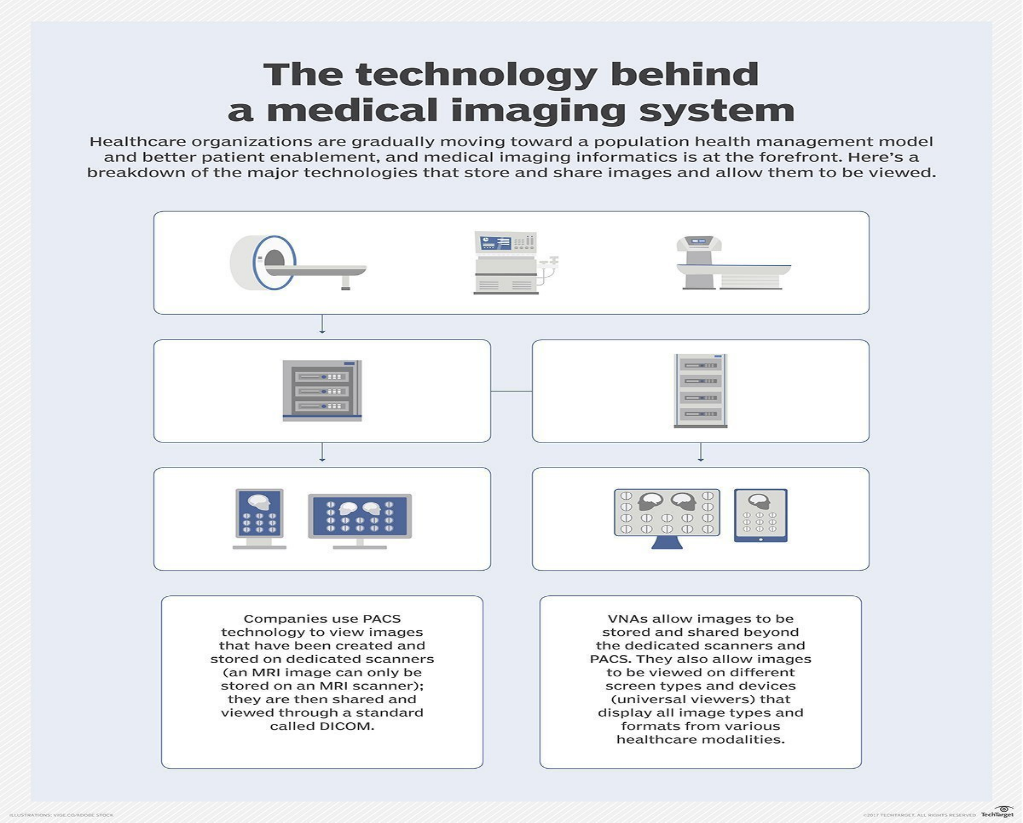
This illustration compares picture archiving and communication systems (PACS) and vendor neutral archives (VNA).
PACS architecture
PACS has four major components: hardware imaging machines; a secure network for the distribution and exchange of patient images; a workstation or mobile device for viewing, processing and interpreting images; and electronic archives for storing and retrieving images and related documentation and reports.
In turn, PACS has four main uses. The technology:
- replaces the need for hard-copy films and management of physical archives.
- allows for remote access, enabling clinicians in different physical locations to review the same data simultaneously.
- offers an electronic platform for images interfacing with other medical automation systems such as a hospital information system (HIS), electronic health record EHR, and radiology information system RIS.
- allows radiologists and other radiology and medical personnel to manage the workflow of patient exams.
Cloud-based PACS
Imaging information systems like PACS have replaced the need to store and manage hard-copy films and reports in space-consuming shelving and rooms. Instead, medical images and non-image data can be securely stored digitally on premises or in the cloud.
Cloud-based PACS store and back up an organization’s medical imaging data to a secure off-site server. This is required in the U.S. by the HIPAA Security Rule, which governs the privacy of patient information. A cloud PACS also enables medical staff to view medical imaging data from any approved devices, such as a smartphone.
Providers often use a hybrid cloud system, in which primary images are stored on-premises and backups are kept in the cloud. Additional types of storage architectures may be configured and attached to the PACS server, such as direct-attached storage DAS, network-attached storage NAS or via a storage area network SAN, each allowing for upgradeability, connectivity, improved protection against failure and added security.
Use with other medical imaging technologies
Although PACS processes are widely adopted in healthcare, vendor neutral archive VNA technology has replaced PACS in some healthcare settings and integrates with PACS in others.
PACS vendors employ various syntaxes within DICOM, which makes it hard for data from one system to work in another system. VNAs enable data integration by deconstructing data from an originating PACS and then migrating the data to the new system with the proper syntax.
DICOM enables imaging technologies to connect with and transfer health data to systems at other healthcare organizations. A RIS, a networked software system for managing medical imagery and associated data, is often used with PACS and VNAs to manage image archives, image orders, record-keeping, and billing.
DICOM Server vs PACS solution
ChatGPT
A DICOM (Digital Imaging and Communications in Medicine) server and a PACS (Picture Archiving and Communication System) solution are both used in the medical field for managing and storing medical images. While they serve similar purposes, there are some differences between them.
DICOM Server: A DICOM server is a software or hardware component that handles the storage, retrieval, and transmission of DICOM images and related medical data. It is a fundamental component of a PACS system and provides the infrastructure to store and manage medical images in a standardized format. DICOM servers typically support various DICOM services, such as storage (SCP), query/retrieve (SCU/SCP), and network communication protocols like DICOMweb and DICOM-RT.
The primary function of a DICOM server is to act as a centralized repository for medical images and associated patient information. It receives stores, and organizes the DICOM images and allows authorized users to access and retrieve them when needed. DICOM servers often offer additional features like image routing, anonymization, data compression, and data backup.
PACS Solution: A PACS solution is a comprehensive system that includes not only the DICOM server but also a range of additional components and functionalities. PACS is designed to facilitate the management, interpretation, and distribution of medical images within a healthcare facility. It integrates with other healthcare systems and workflows to provide seamless access to images for radiologists, clinicians, and other authorized personnel.
In addition to the DICOM server, a PACS solution typically includes the following components:
- Image Acquisition: PACS can interface with various imaging modalities, such as X-ray, MRI, CT scans, etc., to receive images directly from these devices.
- Image Viewing and Interpretation: PACS provides dedicated workstations or web-based viewers for radiologists and clinicians to review and interpret medical images.
- Workflow Management: PACS streamlines the workflow by automating tasks such as image routing, study prioritization, and report generation.
- Integration with Electronic Health Records (EHR): PACS integrates with EHR systems to link medical images with patient records, enabling comprehensive access to patient information.
- Image Distribution: PACS allows authorized users to share medical images securely, both within the healthcare facility and externally, for consultations and referrals.
- Data Analytics and Reporting: Some PACS solutions offer advanced analytics tools for data analysis, research, and quality improvement initiatives.
In summary, a DICOM server is a core component of a PACS solution that handles the storage and retrieval of medical images. A PACS solution, on the other hand, encompasses a broader range of functionalities, including image acquisition, viewing, workflow management, EHR integration, image distribution, and analytics.
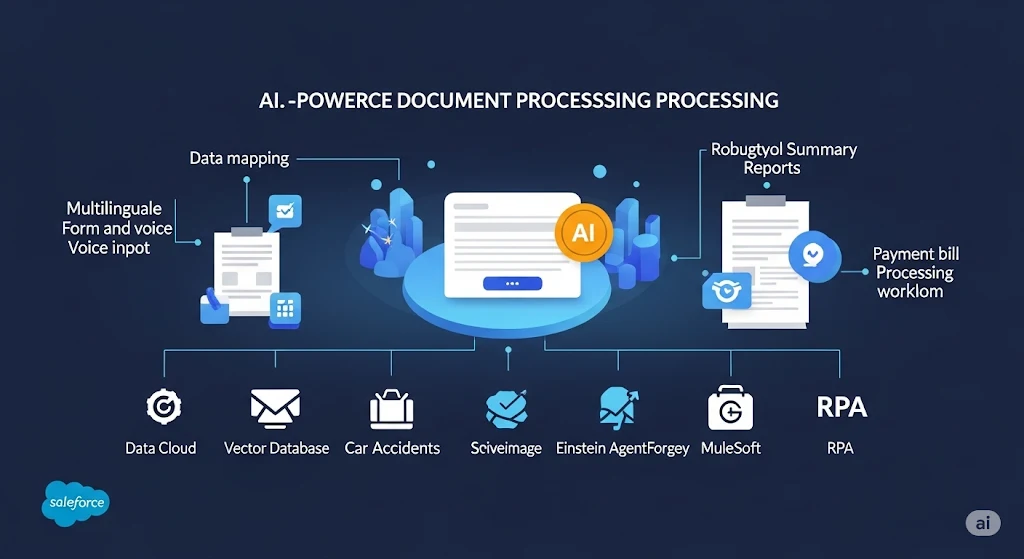
AI-Driven Intelligent Document Processing
AI-Driven Intelligent Document Processing
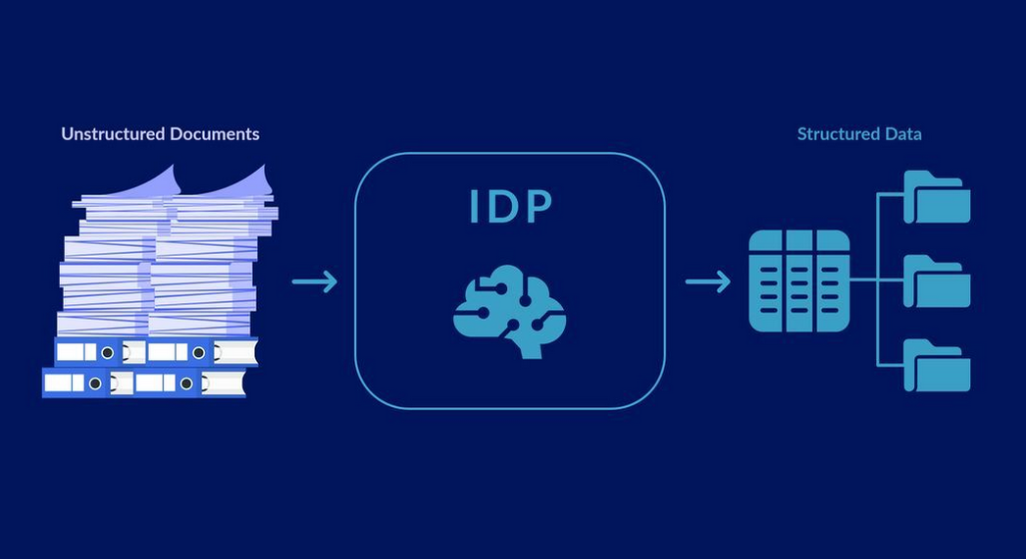
Schedule your one-on-one meeting today.
In the fast-paced business environment, efficient document processing is crucial for delivering timely care and maintaining operational efficiency. Kasetti’s Intelligent Document Processing Tool leverages the power of AI to transform how businesses manage forms and validate data.
Key Features of MuleSoft IDP++ (Kasetti’s IDP):
- AI-powered Multilingual Form processing (PDF and Scanned Images)
- AI-powered Multilingual Voice Input is converted into a form and processed further.
- Enables business users to Map Form Fields across objects, including multi-level child object mappings, for seamless data processing.
AI-powered Multilingual Field-Level validations allow business users to easily set up and customize multiple validations in Natural language, without any coding, tailored to specific business requirements.
AI-powered analyses are utilized to examine submitted images, such as X-rays or car accident photos, and provide relevant insights to aid in diagnosis or decision-making based on Multilingual Natural language validation rules.
- AI-powered summary report on all the form field-level validations and analysis results.
- Facilitates Agents to further query the details submitted (PDF/Scanned Images/Voice Input) by the customer by leveraging CuttingEdge Salesforce AgentForce.
- Facilitates processing of Payment Bills using AI and analyzing and validating the Bill using Multilingual Natural language Validation rules setup. Example: Exclusion of Billing line items and automatically recalculating the total amount.
The tool allows users to validate forms (in PDF, scanned images, or voice input) before submitting them, using a user-friendly interface (Experience Cloud). It creates an AI-powered summary report of the submitted data, which reduces the need for multiple form submissions and helps to prevent delays.
- Harnesses cutting-edge Salesforce technologies, including Data Cloud with Vector Database, Einstein AgentForce, MuleSoft, and MuleSoft RPA, to achieve intelligent document processing (IDP) automation.
Key Features Comparison : MuleSoft OOTB IDP vs Kasetti’s IDP Solution Built on top of MuleSoft IDP
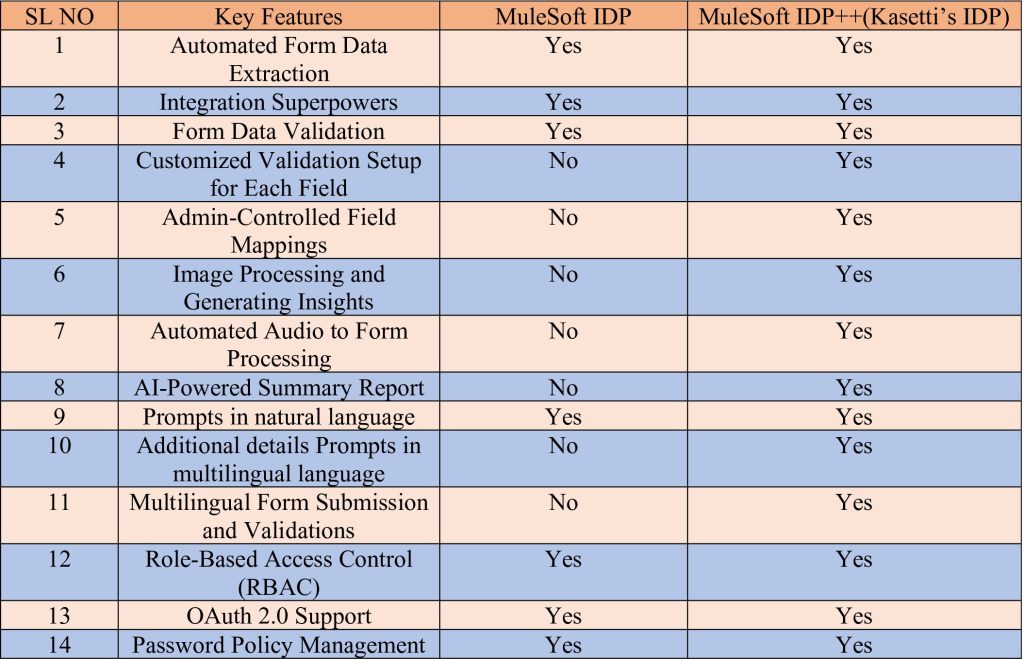
Use Cases:
Use Case 1: Pre-Submission Validation of forms through User Interface (Experience Cloud)
Users are able to upload their completed multilingual form (PDF/Scanned Image) and voice input file via the User Interface (Experience Cloud site) in Salesforce. The tool validates the set validation rules and generates a multilingual summary report in the same language as the submitted form using AI.

Use Case 2 : Multilingual Form Submission and Validation
Once a user submits a multilingual pre-validated form, the tool processes the document, validates it against the natural language multilingual validation rules configured by the admin, and generates an AI-powered multilingual summary report.

Use Case 3:Multilingual Voice Input to Form Processing and Validations:
When a user submits voice input in a multilingual language, like Spanish, the tool will process the input, pre-fill the form with the voice data, validate it against admin-configured multilingual validation rules, and generate an AI-powered multilingual summary report in the same language.


Use Case 4: AI-Powered Analyses on the Submitted Images (X-Ray)
When a user submits an image (e.g., an X-ray or a photo of a car accident), the tool is capable of processing it and generating relevant insights to assist in diagnosis or decision-making. This is done using multilingual natural language validation rules that have been set up.

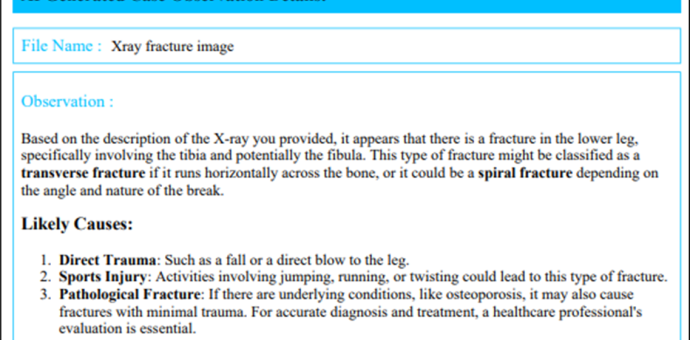
Payment Bills Form Processing using AI
In this use case, a user submits a billing form through our Intelligent Document Processing Tool. The tool automatically processes the document and extracts relevant data, populating it into the appropriate fields. Users have the flexibility to review the list of billed items, with the option to remove any unnecessary items. Upon making adjustments, the tool automatically recalculates the total amount due, ensuring accuracy and efficiency in billing. This streamlined process enhances user experience and reduces the potential for errors, facilitating timely and accurate billing in business operations.

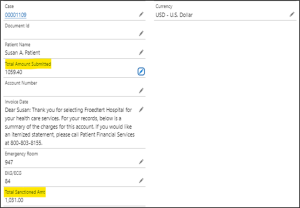
Multilingual Case Detail Retrieval with Salesforce Einstein AgentForce:
In this scenario, users can use Salesforce Einstein Copilot to access case details in multiple languages. For example, a user can submit a form in Spanish and then ask questions in English. Our Einstein Copilot will retrieve the relevant case data in Spanish, translate it seamlessly, and respond in English to ensure clear communication.
Similarly, if a user submits a form in English and later asks questions in their native language, Einstein Copilot will retrieve the data and respond in their preferred language. This feature improves accessibility and provides a smooth, multilingual experience for users, regardless of their language preference.

Form Filled in English and Question asked in Spanish and our tool processed the English Form and responded in Spanish.

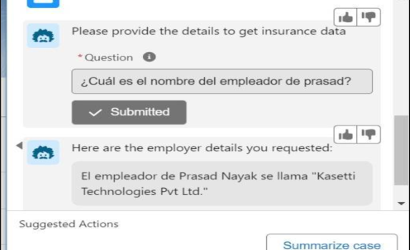
Similarly Form filled in Spanish and Question asked in Spanish and our tool processed the English Form and responded in Spanish.

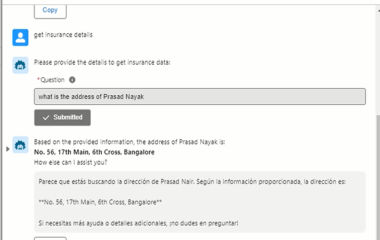
User Form Submission and Analysis Phase:
During the User Form Submission & Analysis Phase, the system automates the intake of claims, billing documents, and images (e.g., X-rays) that are submitted via email. When a submission is made, a case record is automatically created, and the documents are uploaded for processing. Data extraction is performed, and AI analyzes the submitted images to provide valuable insights. The system applies pre-defined validation rules to ensure data accuracy, and it generates an AI-driven summary report that details validation results, errors, and image analysis findings.
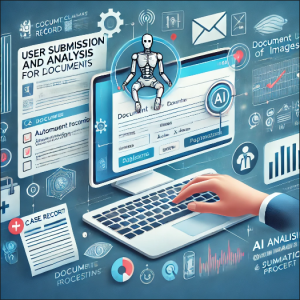
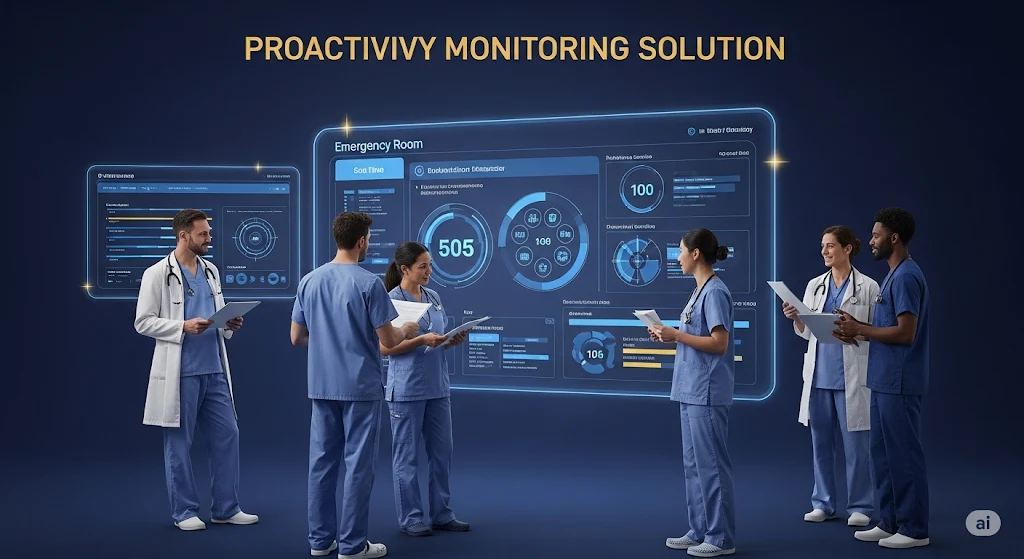
Proactive Monitoring Solution for Healthcare
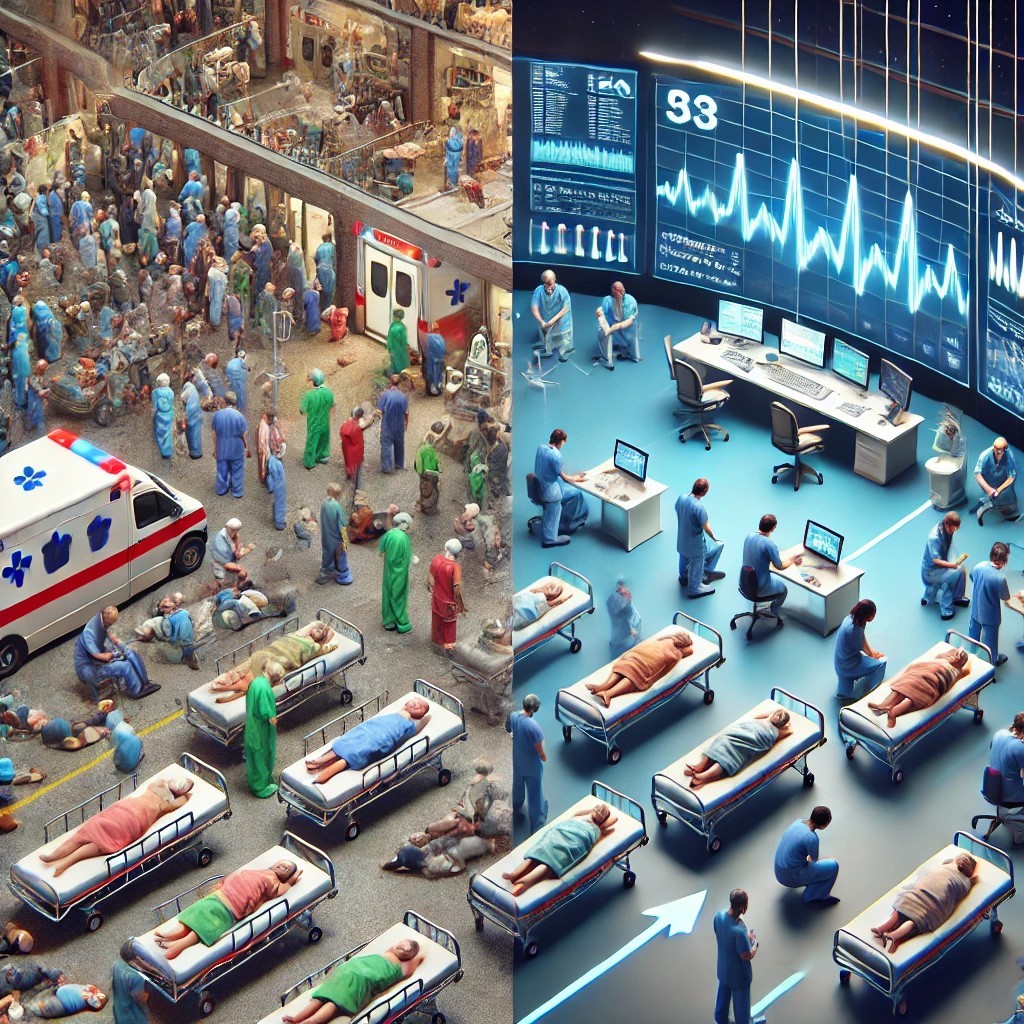
Revolutionizing Emergency Room Efficiency : Proactive Monitoring Solution for Healthcare
In today’s fast-paced healthcare environment, emergency rooms (ERs) are often the first point of contact for patients seeking immediate medical attention. Unfortunately, the influx of patients can lead to overwhelming ER traffic, resulting in extended wait times and overcrowded conditions. This not only places immense strain on healthcare workers but also poses serious risks to patient safety and care quality.
- Dynamic context of healthcare services.
- Flow of patients into emergency rooms, indicating demand and operational efficiency.
- Focus on preventing errors and adverse events in patient care.
- Level of excellence in delivering safe, effective, and timely care.
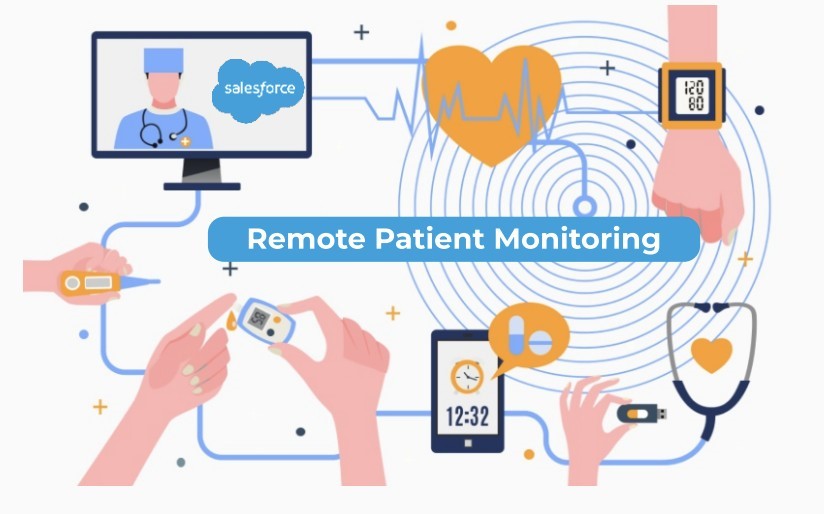
High ER traffic is a multifaceted issue with severe implications. Long wait times can lead to delayed treatments for critical conditions, increased stress for both patients and medical staff, and ultimately, jeopardized patient outcomes. Moreover, the chaotic environment of a busy ER can strain hospital resources,making it difficult to manage both emergency cases and routine treatments effectively.
Kasetti integrates seamlessly into existing hospital systems to monitor patient data continuously. By analyzing trends and patterns, Kasetti can identify potential health issues that may escalate into emergencies if left unattended. This early detection allows healthcare providers to intervene sooner, potentiall y preventing the need for emergency room visits.
Revolutionizing Emergency Room Efficiency
To combat these challenges, the introduction of Kasetti, a cutting-edge proactive monitoring solution, marks a significant advancement in healthcare technology. Kasetti leverages the power of real-time data and advanced analytics to help hospitals and clinics manage and reduce ER traffic effectively.
Reduced ER Traffic
Improved Patient Outcomes
Enhanced Operational Efficiency
Lessened Workload for Healthcare Workers
Why Choose Kasetti Technologies?
Kasetti integrates seamlessly into existing hospital systems to monitor patient data continuously. By analyzing trends and patterns, Kasetti can identify potential health issues that may escalate into emergencies if left unattended. This early detection allows healthcare providers to intervene sooner, potentiall y preventing the need for emergency room visits.
- Results of healthcare, measured by recovery and satisfaction.
- Technology that monitors patient health to allow early intervention.
- Digital tools and systems that enhance patient care and operations.
- Immediate data collection and processing for timely decision-making.
- Sophisticated data analysis for insights and strategic decisions.
- Identifying health issues early for prompt intervention.
Benefits of Kasetti
- Reduced ER Traffic: By addressing health issues before they require emergency care, Kasetti significantly reduces the number of patients needing urgent ER
- Improved Patient Outcomes: Early intervention can lead to better health outcomes. Patients receive timely care before conditions worsen, which can be critical in cases such as heart attacks or
- Enhanced Operational Efficiency: With fewer emergency cases, hospitals can allocate resources11 more effectively, ensuring that both acute and routine cases receive the appropriate level of
- Lessened Workload for Healthcare Workers: Reducing ER congestion helps alleviate the stress and burnout commonly experienced by ER staff, leading to better overall morale and job
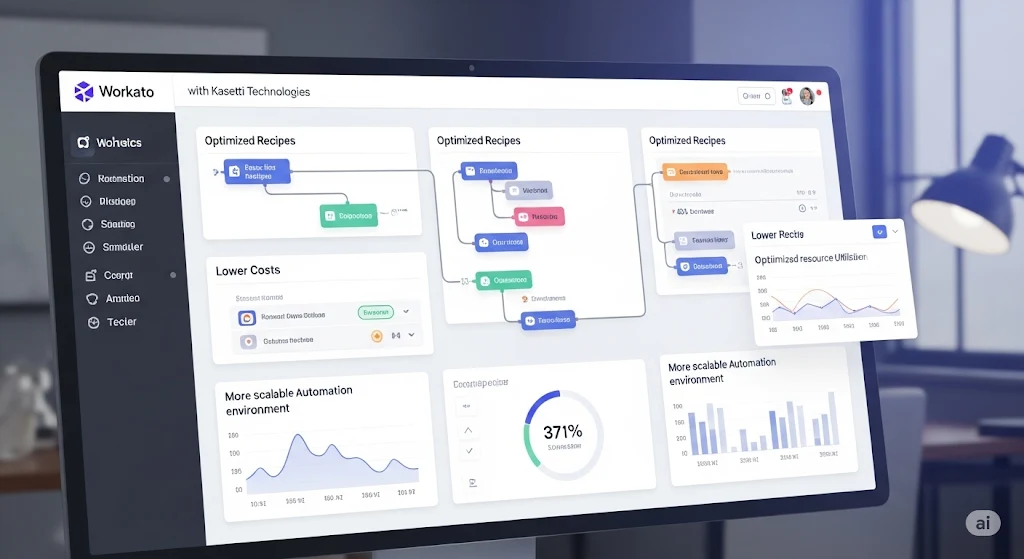
Task Optimization
At Kasetti Technologies, we understand that optimizing tasks in Workato is essential for improving workflow efficiency, reducing costs, and maximizing the effectiveness of your automations. With our expertise, we design and implement high-performance recipes that minimize resource usage and task consumption, resulting in faster processing, lower costs, and a more scalable automation environment.
🌟 Task Optimization in Workato: A Deep Dive
Task usage in Workato plays a critical role in the performance and cost of your automations. Each time a connector action is executed, a task is consumed. While this may seem straightforward, there are many strategies you can use to reduce task usage and improve the efficiency of your workflows. Here’s how we approach it:
Batch Processing: Handle Large Data Sets Efficiently
Batch processing is one of the most powerful techniques for task optimization. Instead of processing each record or transaction individually, we group them into batches, reducing the total number of tasks consumed.
Conditional Logic: Execute Actions Only When Necessary
Using conditional logic allows us to define when actions should execute based on specific conditions. This ensures that unnecessary actions aren’t triggered, conserving tasks and improving the overall efficiency of the recipe.
Data Reuse: Maximize Efficiency by Reusing Data
Efficient data reuse allows you to avoid redundant actions, such as fetching the same data multiple times within the same recipe. By caching data and passing it between steps, we can reduce the number of tasks used and improve performance.
Declaring Multiple Variables in One Step: Reduce Task Consumption
Instead of declaring each variable in separate steps, group related variables together in a single action. This minimizes the number of steps needed to store data, leading to fewer tasks consumed.
Connector Optimization: Leverage Connector-Specific Features
Workato offers connector-specific optimization features that can significantly reduce task consumption. Some connectors allow bulk processing, delta syncs, and other advanced features that help execute actions more efficiently.
Error Handling & Monitoring: Prevent Unnecessary Task Consumption
Error handling is crucial for avoiding task wastage. Proper error management prevents retries and ensures that failed tasks don’t generate unnecessary duplicates.
Monitoring & Resource Management: Continuously Track and Optimize
Workato’s monitoring tools allow you to track task usage and identify potential bottlenecks. By regularly reviewing your recipes’ performance, you can find opportunities for optimization and stay ahead of inefficiencies.
Unlock the full potential of your Workato platform with our expert recipe development services. We specialize in designing highly efficient automations that minimize task usage and maximize performance – ensuring you get the best ROI from every automation
What We Offer:
Custom Recipe Design tailored to your unique business workflows.
Task Optimization Strategies including:
– Batch processing for bulk data handling
– Smart conditional logic to reduce unnecessary executions
– Data reuse and variable management
– Connector-specific enhancements and SDK integrationsError Handling & Monitoring to ensure robust and fault-tolerant automations.
Reporting & Insights to help you track, analyze, and continuously improve task consumption.
💡 Why Choose Us?
Deep expertise in Workato’s platform and best practices.
Proven methods to lower task usage while improving performance.
Scalable solutions that grow with your business.
Ongoing support and optimization services.
Let Us Help You:
Whether you’re just getting started or looking to improve existing recipes, our services are designed to help you achieve efficiency, cost savings, and seamless automation.

AI-Powered Behavioral Marketing System: Redefining Personalized Engagement at Scale
In today’s dynamic, hyper-competitive landscape, generic marketing is no longer sufficient. To capture attention and foster brand loyalty, enterprises need smarter, faster, and more personalized outreach mechanisms. The AI-Powered Behavioral Marketing System is a transformative solution engineered to deliver just that—intelligent, contextual, and scalable engagement across every customer journey.
This enterprise-grade platform elevates traditional marketing approaches by tapping into behavioral signals, applying predictive intelligence, and enabling real-time campaign decisions. Whether you’re looking to supercharge your conversions or deepen customer relationships, this system serves as your strategic blueprint for marketing transformation.
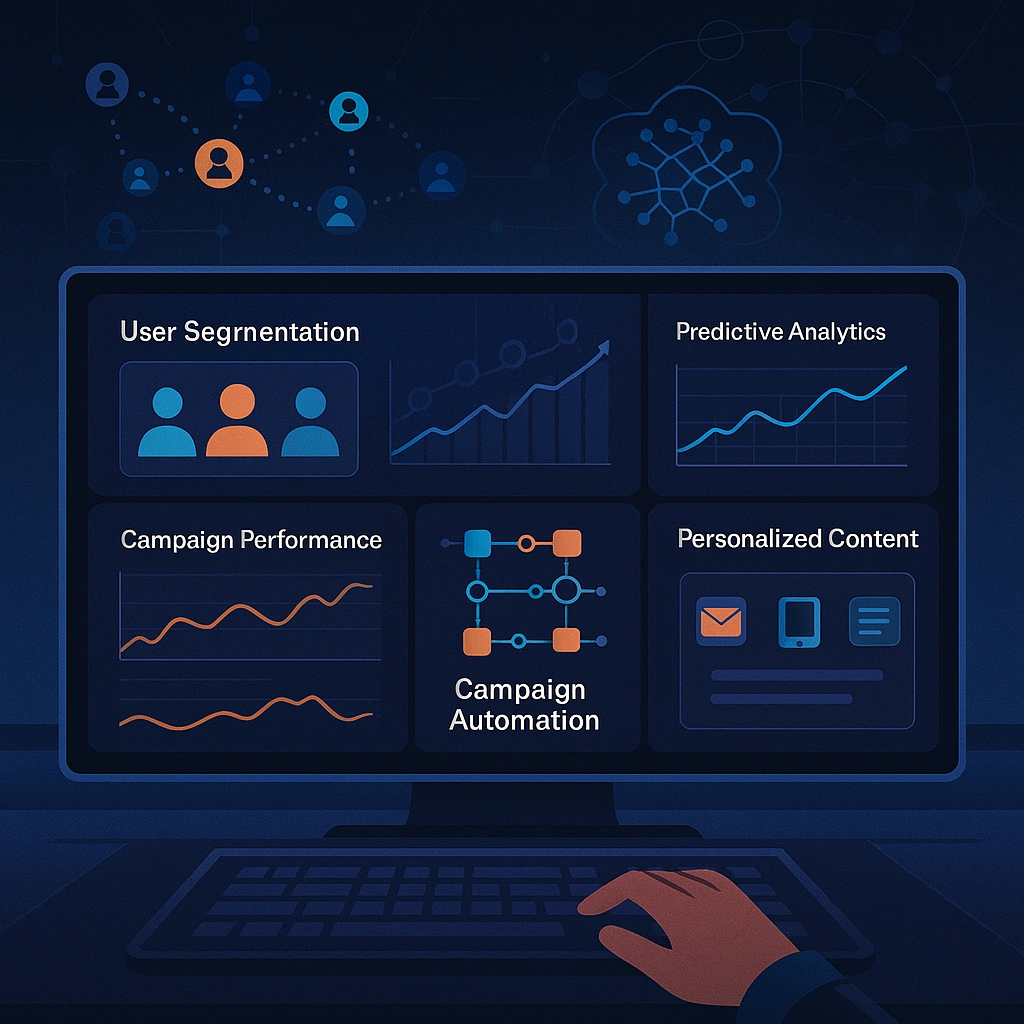
🌐 A New Era of Engagement
The foundation of this system lies in its ability to convert fragmented behavioral signals into strategic actions. By analyzing patterns, segmenting audiences, and adapting in real-time, businesses can replace static campaigns with fluid, adaptive customer journeys. This not only maximizes ROI but also fosters deeper brand affinity.
🎯 Key Features & Capabilities
Each capability of the AI-Powered Behavioral Marketing System is purpose-built to empower marketing teams with precision and agility. Let’s explore them in detail:
📊Real-Time Behavioral Data Tracking
Understanding your customer begins the moment they interact with your brand. This platform continuously monitors user actions—clicks, scrolls, views, and purchases—across channels, devices, and touchpoints.
- ✅ Instant visibility into user intent
- ✅ Dynamic behavioral heatmaps
- ✅ Lifecycle event tracking for every interaction
📈 Business Impact
Marketers can react as behaviors evolve, not after the fact. This proactive visibility fuels relevance and timeliness in every engagement.
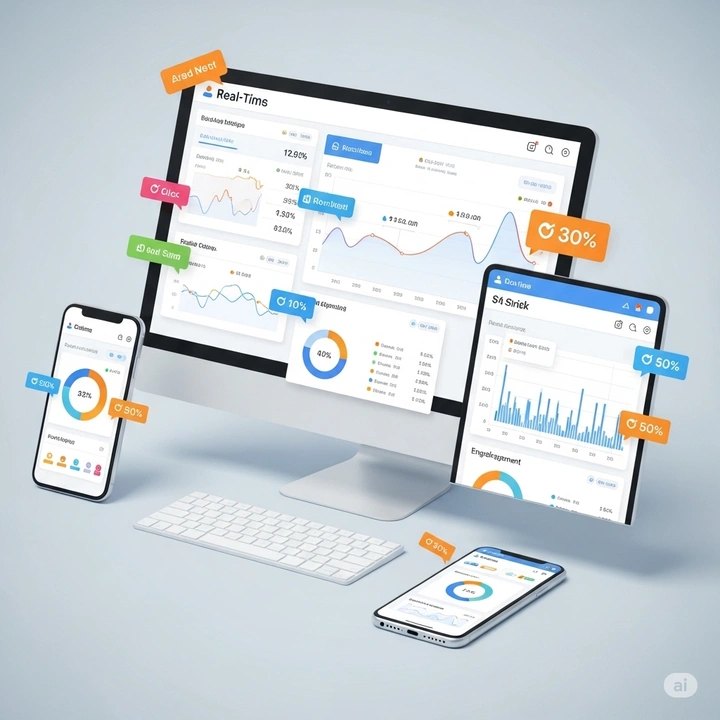
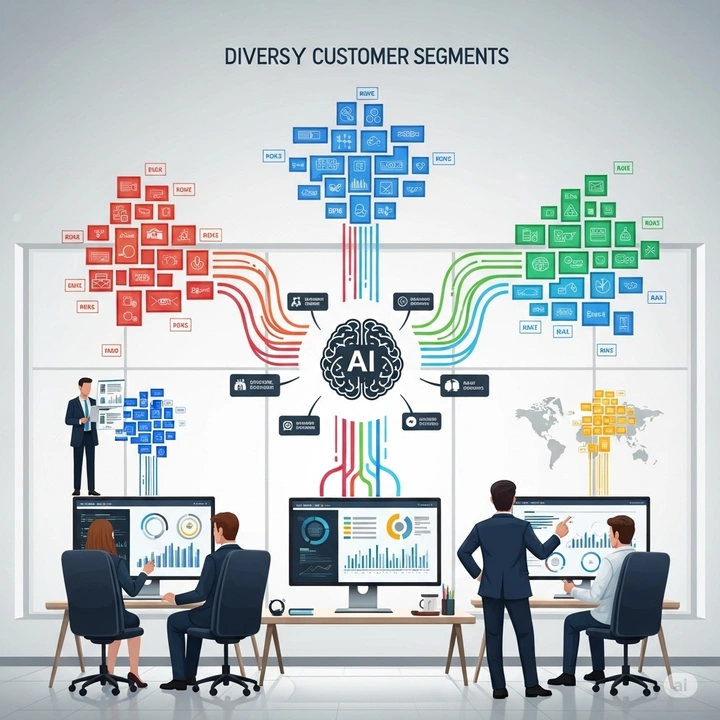
🧠Intelligent Customer Segmentation
Not all customers behave the same—and they shouldn’t be treated the same either. This system uses behavioral cues and learning models to automatically segment users into high-intent, passive, or at-risk groups.
- ✅ Self-adjusting segments based on live behavior
- ✅ Demographic, psychographic, and contextual filters
- ✅ Zero manual input required for segment updates
📈 Business Impact
Segmentation becomes dynamic, enabling marketers to launch precision-targeted campaigns that resonate with each customer group.
🤖AI-Driven Personalization
Generic messages don’t convert. Personalized experiences do. This platform tailors every interaction—messaging, content, and timing—based on individual user profiles and historical engagement.
- ✅ Personalized product or content recommendations
- ✅ Adaptive messaging across email, SMS, web, and mobile
- ✅ Content sequencing optimized for behavioral affinity
📈 Business Impact
When users feel understood, they engage more deeply. Personalized experiences lead to significantly higher conversion rates and customer retention.
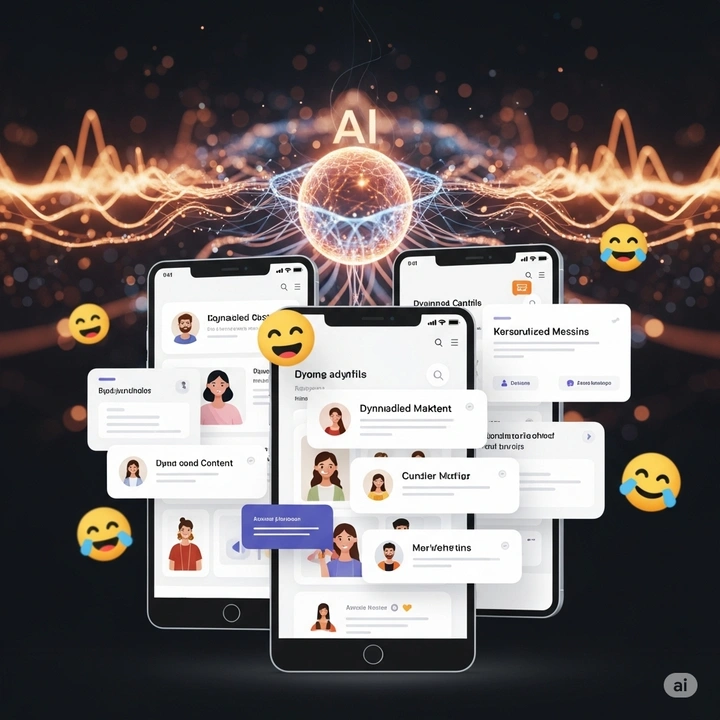
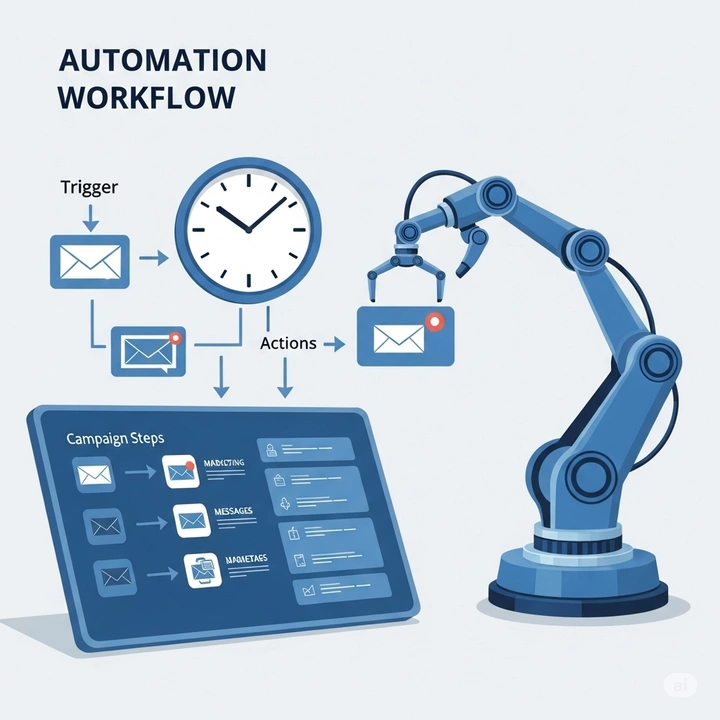
🔁Automated Campaign Execution
Manual campaign planning is outdated. This system enables hands-free campaign delivery based on pre-defined triggers and behavior-based automation flows.
- ✅ Journey orchestration with behavioral checkpoints
- ✅ Triggered campaigns based on events, scores, or inactivity
- ✅ Pre-built templates that launch with minimal input
📈 Business Impact
Campaigns don’t just run—they evolve. This ensures that every customer receives timely and relevant messages at the moment of highest impact.
📈Predictive Analytics for Conversion Optimization
Guesswork is out. Predictive intelligence is in. This system leverages behavioral signals to forecast the next-best action for each user—whether it’s a product upsell, content suggestion, or engagement nudge.
- ✅ Conversion probability scoring
- ✅ Abandonment prediction
- ✅ Timing and channel optimization
📊 Business Impact
With the ability to anticipate user behavior, businesses can act decisively and drive outcomes with confidence.

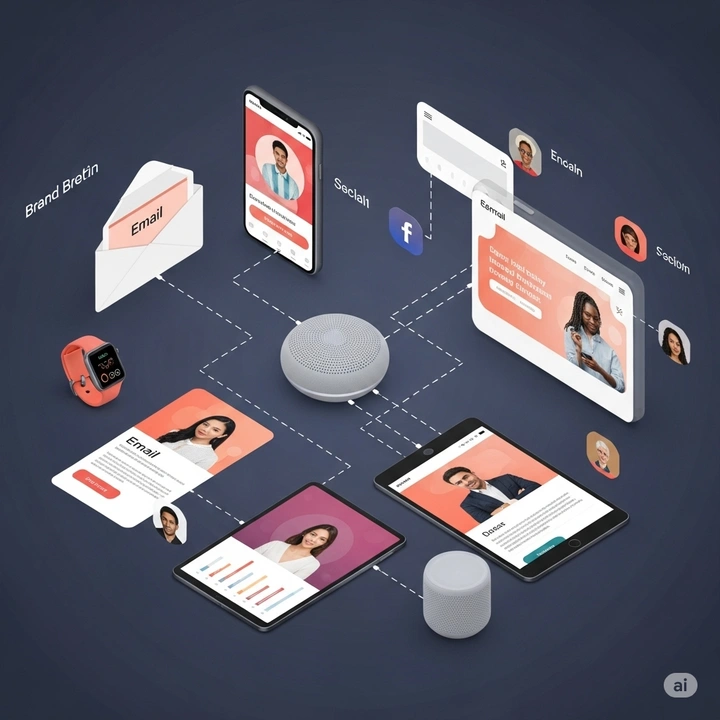
📲Omnichannel Engagement
Consistency breeds trust. This platform ensures unified messaging and experiences across every customer touchpoint—email, web, mobile, social, and beyond.
- ✅ Centralized messaging hub
- ✅ Cross-channel sync with real-time updates
- ✅ Responsive personalization across channels
📈 Business Impact
Users receive coherent, context-aware communication, no matter where they are. This continuity enhances brand perception and engagement.
🧩Dynamic Content Recommendations
Keep content fresh and relevant. The platform continuously analyzes engagement trends to serve the most impactful content at the right moment.
- ✅ Smart content rotation based on behavioral fit
- ✅ Real-time adjustments based on campaign performance
- ✅ Content affinity scoring
📈 Business Impact
Content is no longer a static asset—it becomes a living part of the engagement strategy, dynamically adapting to user needs.
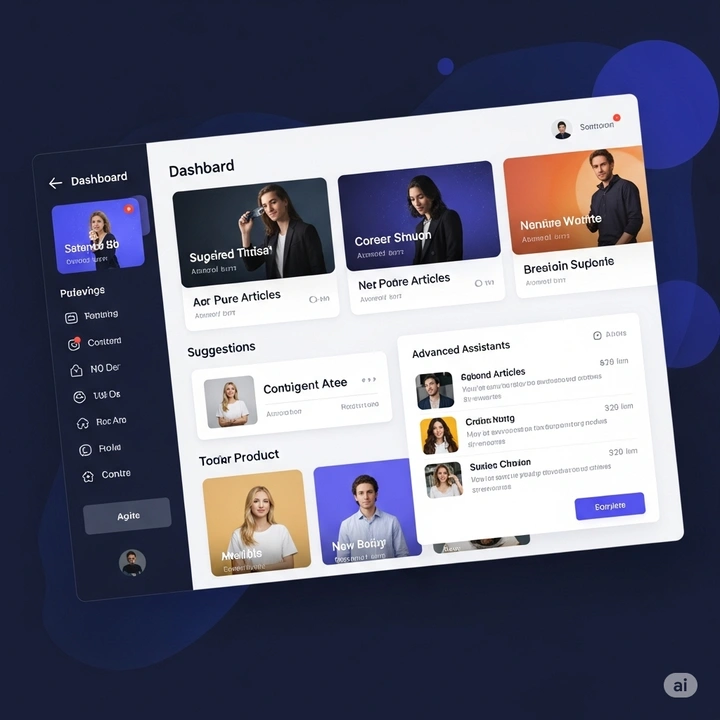

📉Performance Monitoring & Optimization
With built-in dashboards and executive summaries, this system provides instant clarity into campaign performance, audience engagement, and revenue attribution.
- ✅ Funnel insights and drop-off analysis
- ✅ Campaign and channel ROI measurement
- ✅ A/B testing with automated winner selection
📈 Business Impact
Marketing leaders can drive continuous improvement with granular performance visibility—turning insight into impact.
🏗️Scalable Marketing Automation Architecture
This isn’t a one-size-fits-all tool—it’s an enterprise-ready engine. Designed to scale with your business, the system supports millions of interactions with zero performance degradation.
- ✅ Multi-region deployment readiness
- ✅ Modular automation workflows
- ✅ No-code interfaces for campaign builders
📈 Business Impact
Marketing teams can experiment freely and deploy at scale—without technical roadblocks or operational delays.
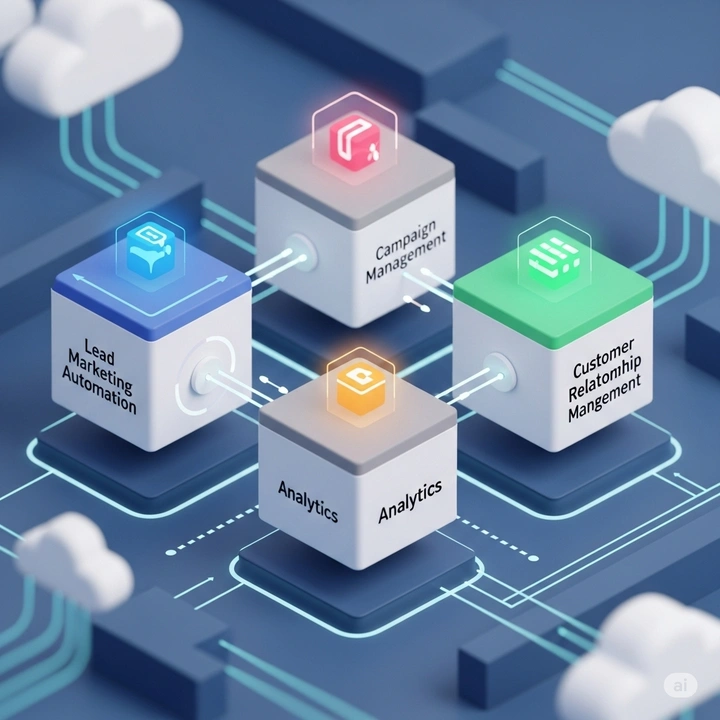

🤝Seamless Integration with Existing Data Ecosystems
Whether it’s a CRM, a data warehouse, or third-party tools—this system integrates natively to ensure fluid data exchange and operational synergy.
- ✅ Unified customer profiles
- ✅ Real-time data syncing with enterprise platforms
- ✅ Bi-directional data flows for enriched intelligence
📈 Business Impact
You don’t need to rip and replace. This solution fits into your current tech stack, enhancing your capabilities without disruption.
📌 Final Thoughts
The AI-Powered Behavioral Marketing System is not just a tool—it’s a strategic enabler for customer-centric transformation. By combining behavioral intelligence with automation and predictive insight, it empowers businesses to elevate their marketing from reactive to real-time, from generic to personal, and from guesswork to data-driven precision.
If your organization is ready to transform marketing into a growth engine, this is the blueprint to begin that journey.
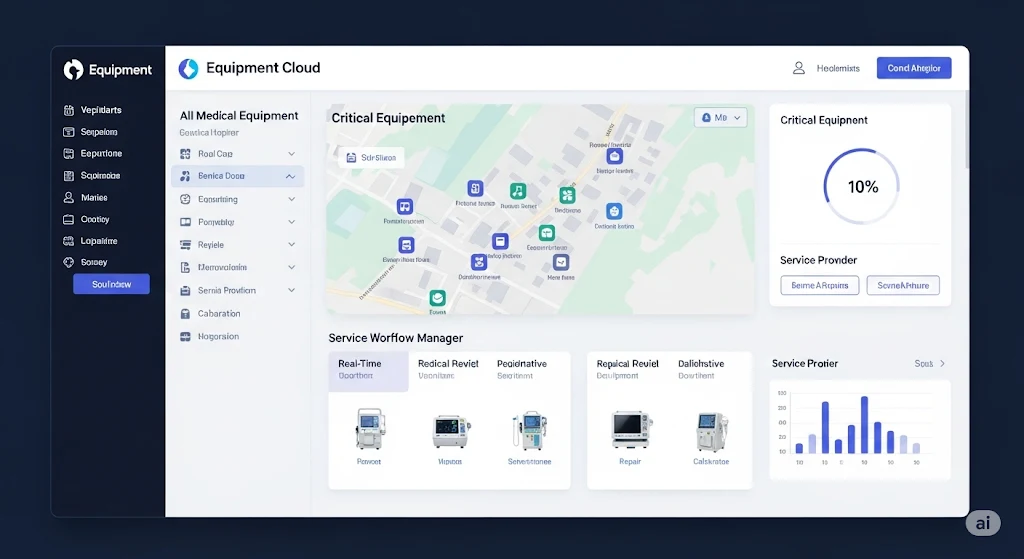
Revolutionizing Medical Equipment Management in Modern Healthcare
In today’s fast-paced healthcare environment, managing medical equipment across multiple facilities poses a significant operational challenge. From procurement and maintenance to real-time tracking and location monitoring, traditional systems often lack the agility and visibility needed for modern clinical demands.
Addressing this gap, a next-generation Equipment Cloud platform was engineered specifically for the healthcare domain. It empowers organizations to centralize equipment oversight, streamline service workflows, and gain real-time operational insight—all through one intelligent, unified interface.
🌟 Key Capabilities That Transform Equipment Operations
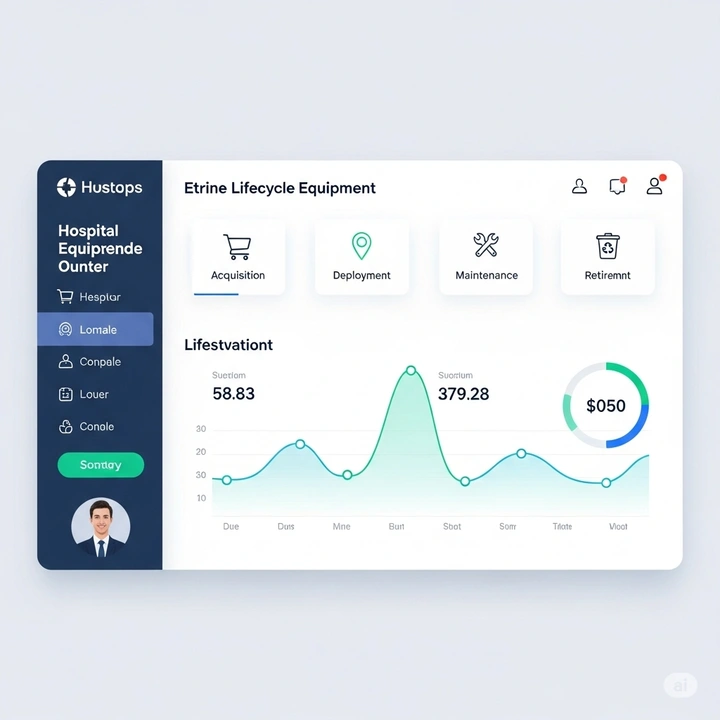
Managing the full lifecycle of medical devices, from acquisition to retirement, can often become disjointed and opaque. The Equipment Cloud solves this by providing a centralized framework to oversee every phase of the life cycle:
- Procurement & Onboarding: Capture vendor details, warranty info, and compliance certificates in a single, organized repository.
- Deployment & Allocation: Assign equipment to specific wards or departments, ensuring optimal utilization.
- Maintenance Scheduling: Track recurring service milestones, calibrations, and inspections for every asset.
- Decommissioning & Audit: Automate the retirement process with full audit trails and disposal guidelines.
This end-to-end visibility ensures that every piece of medical equipment is always accounted for, functional, and compliant with regulatory standards.
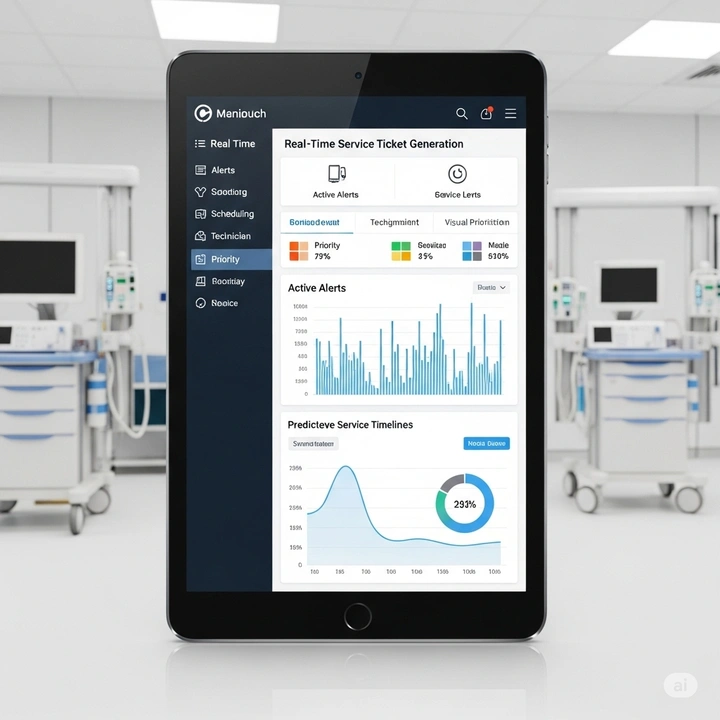
In traditional healthcare settings, maintenance often becomes a reactive process, triggered only after a failure occurs. The Equipment Cloud flips this paradigm by introducing predictive and automated service management:
- Trigger-Based Service Tickets: Automatically generate maintenance tickets based on usage data, warranty expiration, or compliance deadlines.
- Priority-Based Queues: Assign urgency levels to requests to prevent equipment downtime in critical care areas.
- Technician Allocation: Match service requests with available field engineers based on location and specialization.
The result? Faster turnaround times, improved equipment uptime, and reduced administrative overhead for biomedical engineering teams.
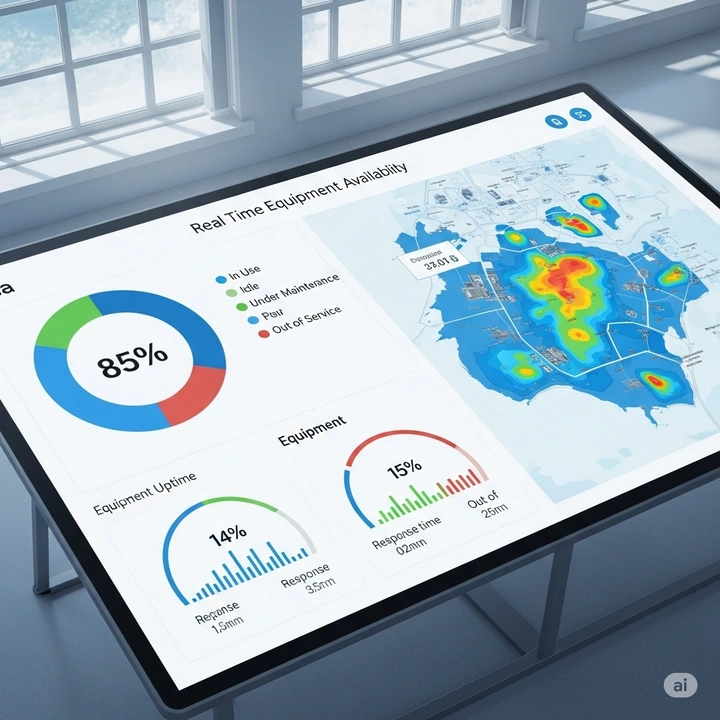
Knowing the real-time status of every critical medical device is no longer optional—it’s essential. The Equipment Cloud brings intelligent tracking and dynamic dashboards to the forefront:
- Live Usage Monitoring: Capture operational hours and performance metrics across all deployed units.
- Availability Snapshots: Visual dashboards show which assets are in use, idle, under maintenance, or out-of-service.
- Utilization Analytics: Identify underused or overused equipment to guide procurement decisions and improve ROI.
These capabilities empower operations teams to make data-backed decisions on reallocation, purchasing, and preventive care.
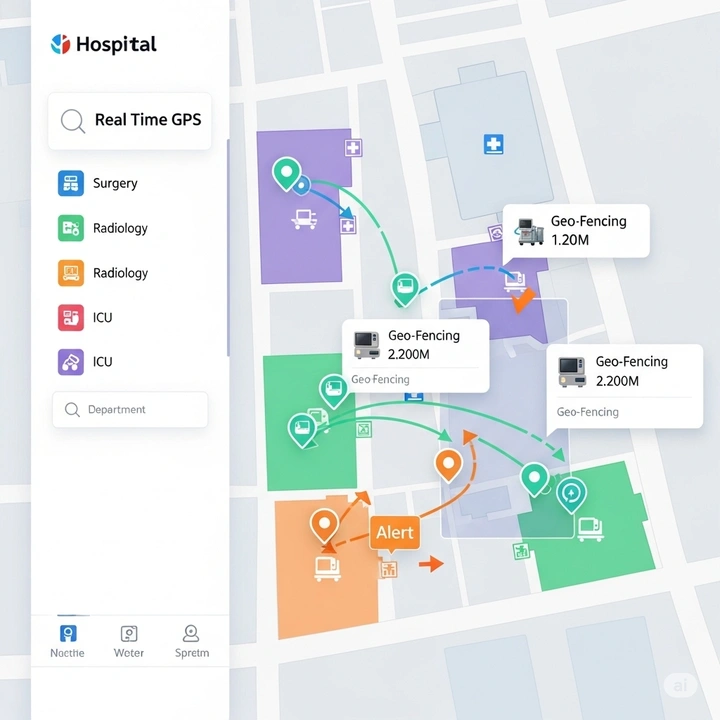
In large hospital networks, locating the right equipment at the right time can mean the difference between timely care and delays. The Equipment Cloud offers granular, location-based insights to solve this:
- Ward-Level Mapping: Visualize the current location of each asset across hospital floors and departments.
- Geo-Fencing Alerts: Get notified when equipment moves outside authorized zones.
- Equipment Handover Logs: Maintain digital logs of when and where assets are transferred.
With these controls in place, staff no longer need to “hunt” for devices—everything is just a glance away.
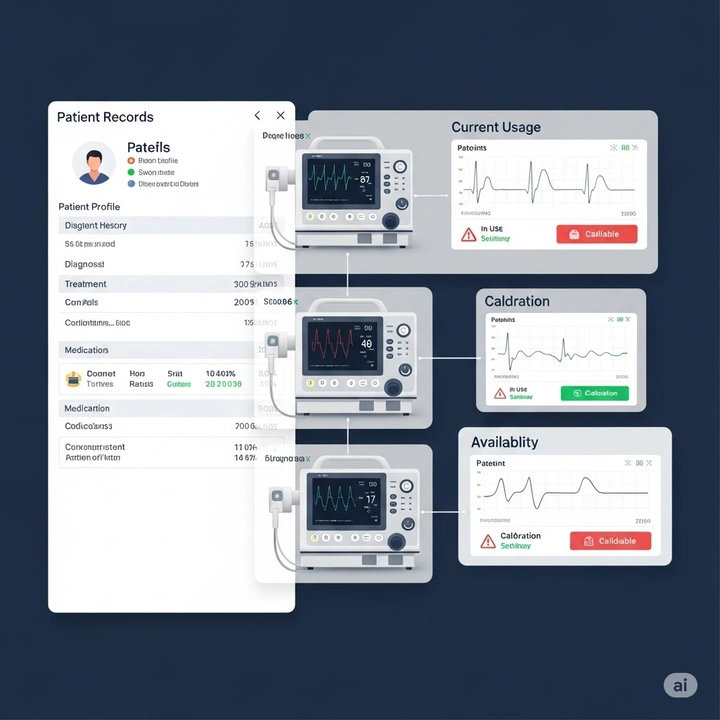
Modern healthcare requires systems that talk to each other. The Equipment Cloud is built to integrate effortlessly into patient-focused platforms, ensuring clinical data and equipment data remain in sync:
- Care Workflow Alignment: Equipment status can influence scheduling, diagnostics, and patient handoffs.
- Compliance Tracing: Ensure devices used in patient care meet necessary calibration and certification standards.
- Unified Patient + Equipment View: Enable clinicians to see patient interactions alongside device usage for deeper insights.
By embedding equipment intelligence within broader care workflows, the platform creates a connected clinical environment where technology supports—not obstructs—patient outcomes.
📈 Business Outcomes That Matter
Implementing the Equipment Cloud has resulted in measurable improvements for healthcare organizations:
⏱️ 30% reduction in equipment downtime through predictive maintenance
💼 25% boost in technician productivity with automated service workflows
🏥 Real-time visibility across 100% of critical assets in multi-site hospital systems
📉 Significant reduction in asset loss and duplication due to better tracking
✅ Final Thoughts
The Equipment Cloud is more than just a digital inventory—it’s a strategic operations enabler for healthcare institutions. By centralizing asset data, automating service processes, and integrating equipment intelligence into care delivery workflows, this solution delivers both operational excellence and enhanced patient care.
Whether you’re a hospital administrator, operations director, or a care delivery executive, this platform redefines how you manage one of your most critical assets: the technology that supports patient lives.
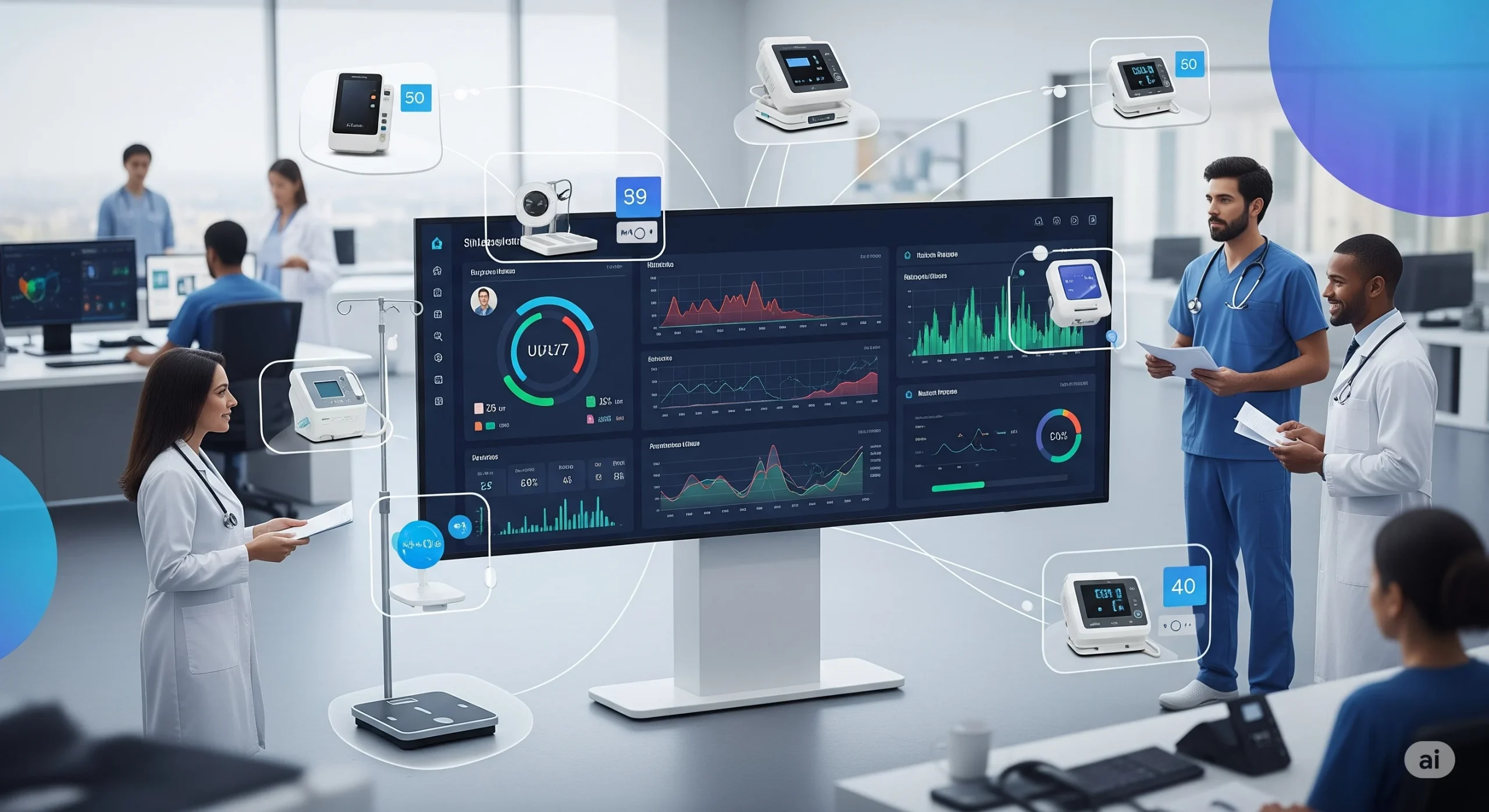
Remote Patient Monitoring: Intelligent Health Insights in the Cloud
In an era where healthcare is rapidly transitioning to proactive, data-driven care models, remote patient monitoring (RPM) emerges as a critical pillar. This project delivers an enterprise-grade RPM solution that seamlessly ingests vital health metrics from distributed medical devices and turns them into actionable insights in real time.
⚡ Real-Time Health Data Ingestion
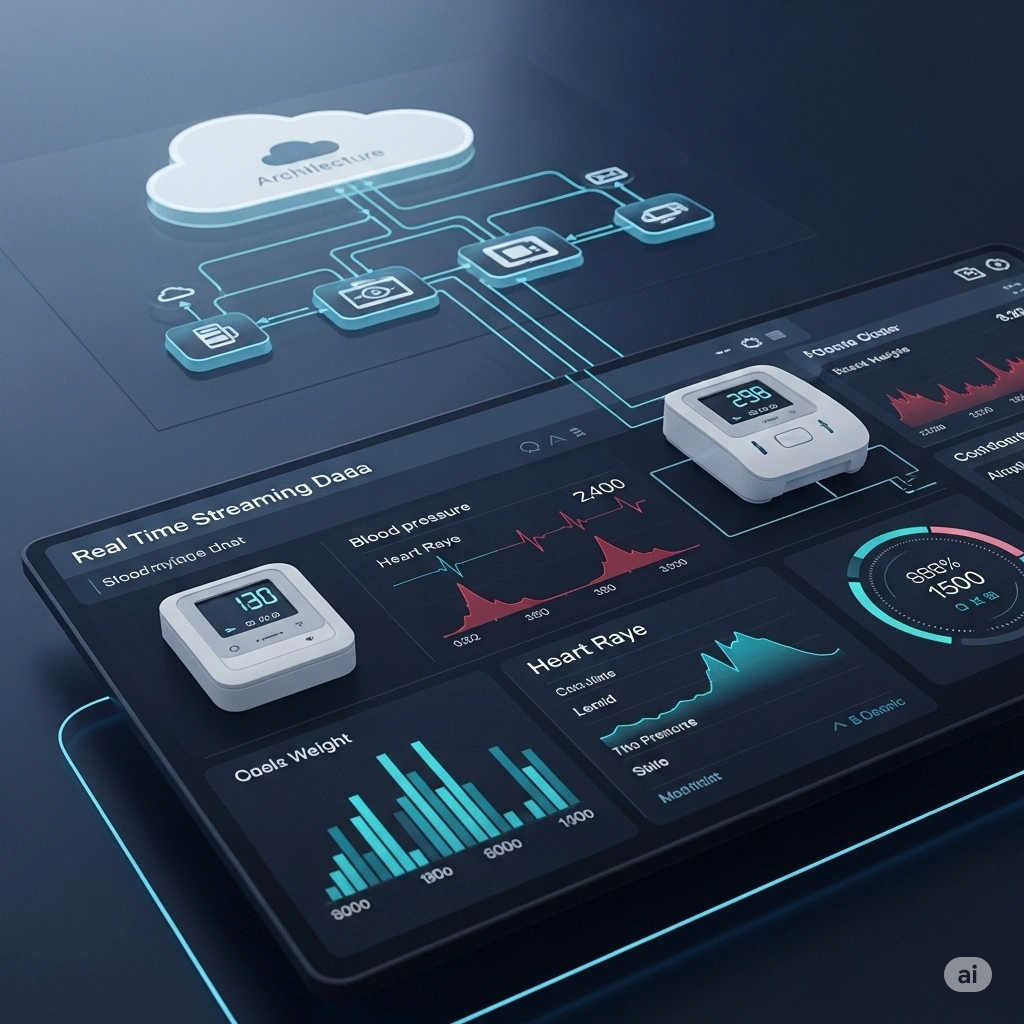 The system begins at the edge—remote monitoring devices deployed in patients’ homes continuously collect vital readings such as blood pressure, heart rate, and weight.
These metrics are transmitted in real time through a secure integration layer, ensuring zero lag in critical health events. Each incoming signal is immediately parsed, validated, and routed to the central data lake.
💡 Outcome: Continuous, real-time stream of patient vitals enables clinicians to monitor health trends without delay, minimizing the risk of missing early warning signs.
The system begins at the edge—remote monitoring devices deployed in patients’ homes continuously collect vital readings such as blood pressure, heart rate, and weight.
These metrics are transmitted in real time through a secure integration layer, ensuring zero lag in critical health events. Each incoming signal is immediately parsed, validated, and routed to the central data lake.
💡 Outcome: Continuous, real-time stream of patient vitals enables clinicians to monitor health trends without delay, minimizing the risk of missing early warning signs.
🧠 Intelligent Vital Signs Processing
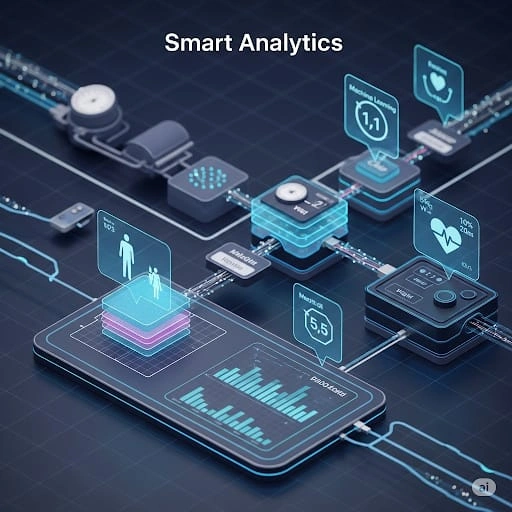
Once the data is ingested, it flows through a scalable health processing pipeline. Here, structured logic evaluates each metric against established clinical baselines. For instance:
- Blood pressure readings are monitored for hypertension or hypotension triggers.
- Weight fluctuations are analyzed to detect signs of fluid retention or rapid loss.
The system performs this contextual analysis in near real-time, ensuring that transient anomalies are distinguished from consistent deterioration patterns.
🩺 Outcome: Clinically informed decisions are made automatically, enhancing diagnostic speed and reducing reliance on manual review.
📊 Unified Dashboards for Healthcare Professionals
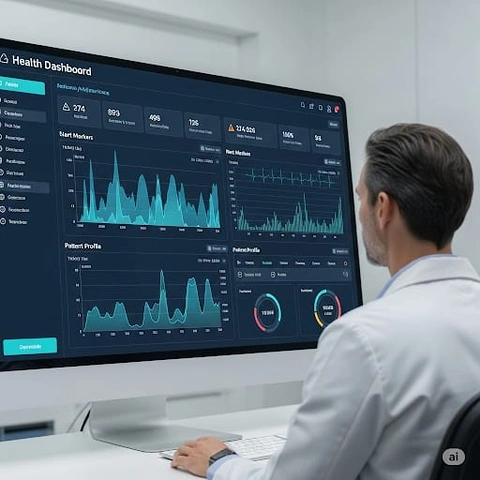
Visualizing this data in a digestible format is paramount for frontline clinical staff. The platform offers interactive health dashboards that consolidate all patient data into a single pane of glass. Key capabilities include:
- Time-series charts for vital sign trends
- Anomaly flags with color-coded risk indicators
- Patient-specific snapshots and historical comparisons
📈 Outcome: Stakeholders gain a 360° view of patient health, reducing information fragmentation and improving continuity of care.
🚨 Automated Alerts for Abnormal Values
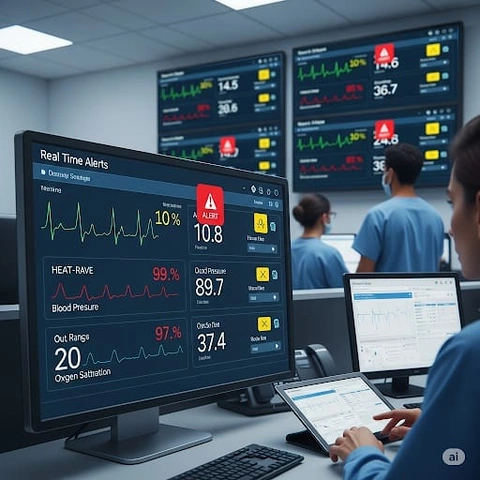 The system continuously monitors for any deviation from normal thresholds. If a patient’s vitals breach these defined limits, a dynamic alert mechanism is triggered. Each alert is:
The system continuously monitors for any deviation from normal thresholds. If a patient’s vitals breach these defined limits, a dynamic alert mechanism is triggered. Each alert is:
- Prioritized based on severity (e.g., red for critical hypertension)
- Contextualized with historical patterns
- Routed to the appropriate care team or individual
🗂️ Proactive Case Creation for Critical Health Events

Beyond alerts, the system is designed to take proactive steps. For high-risk readings, a case is automatically created and assigned in the patient management system. Each case includes:
- Full vital history leading up to the event
- Timestamped logs of alerts triggered
- Recommendations for follow-up action
These cases can then be routed to care coordinators or specialist teams for escalation, reducing administrative lag.
🧾 Outcome: Automating case creation ensures no critical event falls through the cracks, and patients receive timely intervention based on data, not delay.🧩 Behind the Integration
While the platform’s strength lies in its seamless functionality, its success is underpinned by a tightly integrated tech stack:
- API Management Layer: Real-time data ingestion from decentralized medical endpoints.
- Cloud Infrastructure: Ensures patient data is scalable, compliant, and always available.
- Visualization & Alerting: Natively integrated with care management workflows for proactive response.
This solution doesn’t just collect data—it turns it into continuous, coordinated, context-aware care.
🏁 Final Thoughts
Remote Patient Monitoring in the Data Cloud shifts healthcare from reactive systems to truly predictive intelligence. It unites edge telemetry with cloud-driven decision-making, turning scattered data into focused clinical intervention—every heartbeat, weight, and signal becomes a potential lifesaver.
The future of healthcare doesn’t reside within four walls—it lives wherever the patient is. And with real-time, intelligent RPM, that future is no longer distant—it’s already here.
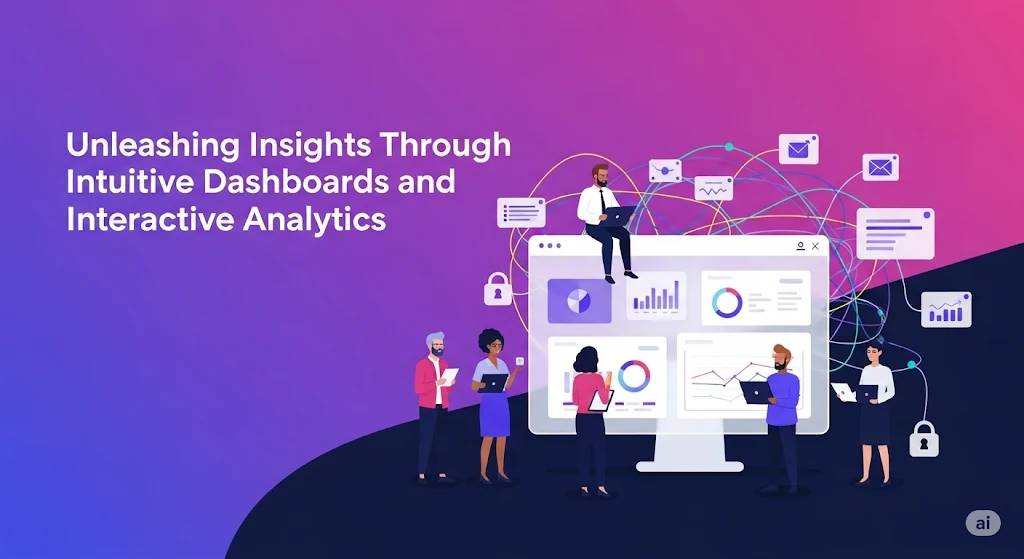
Unleashing Insights Through Intuitive Dashboards and Interactive Analytics
In the modern data-driven enterprise, access to real-time insights is no longer a luxury—it’s a necessity. Executives, managers, and analysts are all tasked with driving decisions faster, smarter, and more confidently. But in a world where data is scattered across multiple systems and locked behind complex query languages, how do business teams truly unlock its value?
Introducing a powerful, browser-based platform for data exploration and storytelling—designed to democratize analytics without overwhelming business users.
⚠ The Problem: Data Without Context
Many organizations today are sitting on mountains of valuable data—but few are able to tap into it. Traditional business intelligence tools are often:
- Overly complex for non-technical users
- Rigid in their visualizations
- Disconnected from real-time updates
- Dependent on IT or analysts for every new report
- The result? Decision latency, lost opportunities, and misaligned strategies.
🚀 The Solution: A Unified Exploration Workspace
Imagine a platform where any stakeholder can instantly turn data into dashboards, dive into trends with a few clicks, and ask follow-up questions without waiting in ticket queues. That’s the promise delivered through this solution—a self-service data exploration interface that bridges the gap between business curiosity and technical complexity.
Here’s how it transforms decision-making at every level:
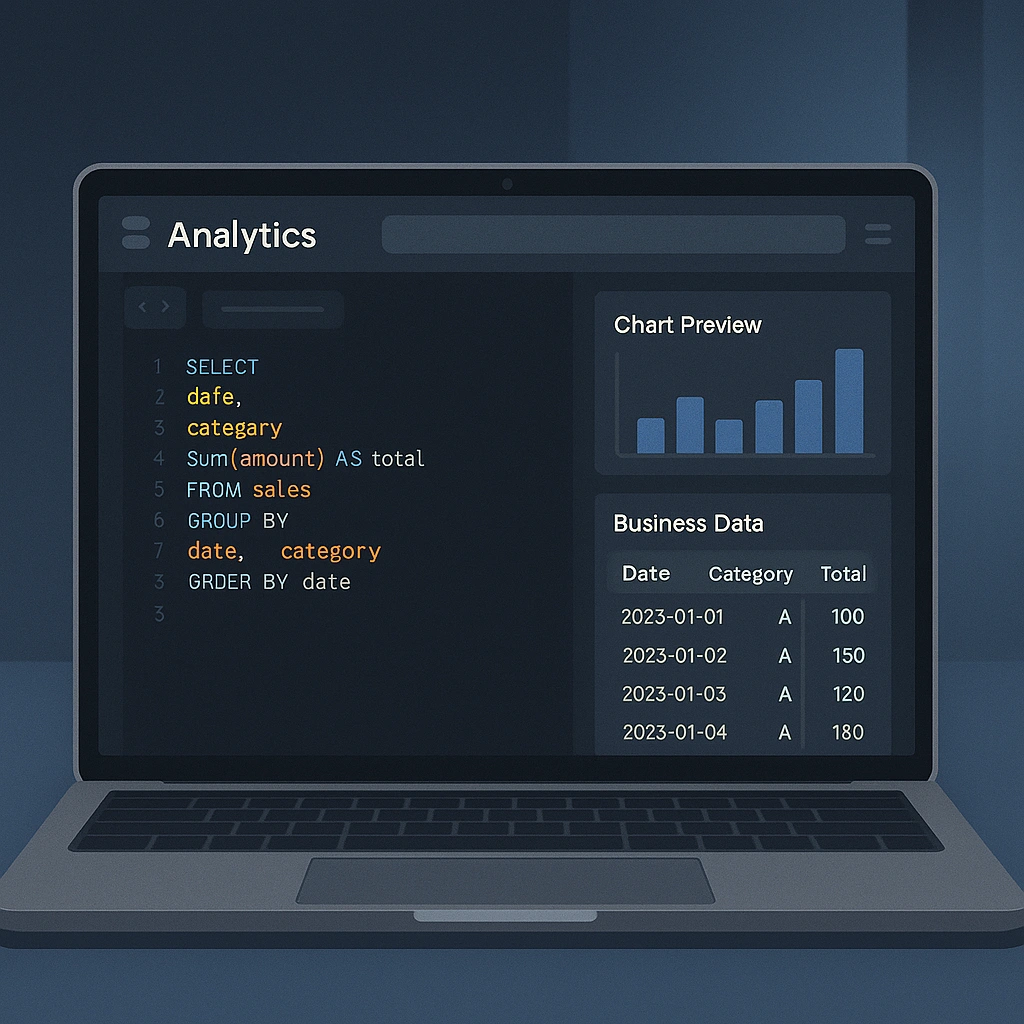
🔍 Web-Based Exploration Workspace
A Smart SQL Editor Without the Jargon Even for users who don’t speak SQL fluently, this interface provides an intuitive way to explore datasets, filter results, and discover correlations. For data-savvy professionals, the platform offers a web-based query editor to craft precise queries and extract nuanced insights.
- No installations required
- Access anywhere, anytime
- Real-time query previews and smart suggestions
- Seamless dataset preparation for dashboards
This turns business users into empowered explorers—no more waiting days for IT to run a simple filter.

📊 Interactive Dashboards & Real-Time Visualizations
Turn rows of raw data into compelling visuals—without needing a background in data science. With an extensive library of over 40 visualization types, users can create:
- Trend lines that tell a story
- Geo-visuals that show performance by region
- Bar, pie, and funnel charts for executive summaries
Visuals are interactive, drillable, and shareable—perfect for meetings, reports, or spontaneous strategic reviews.
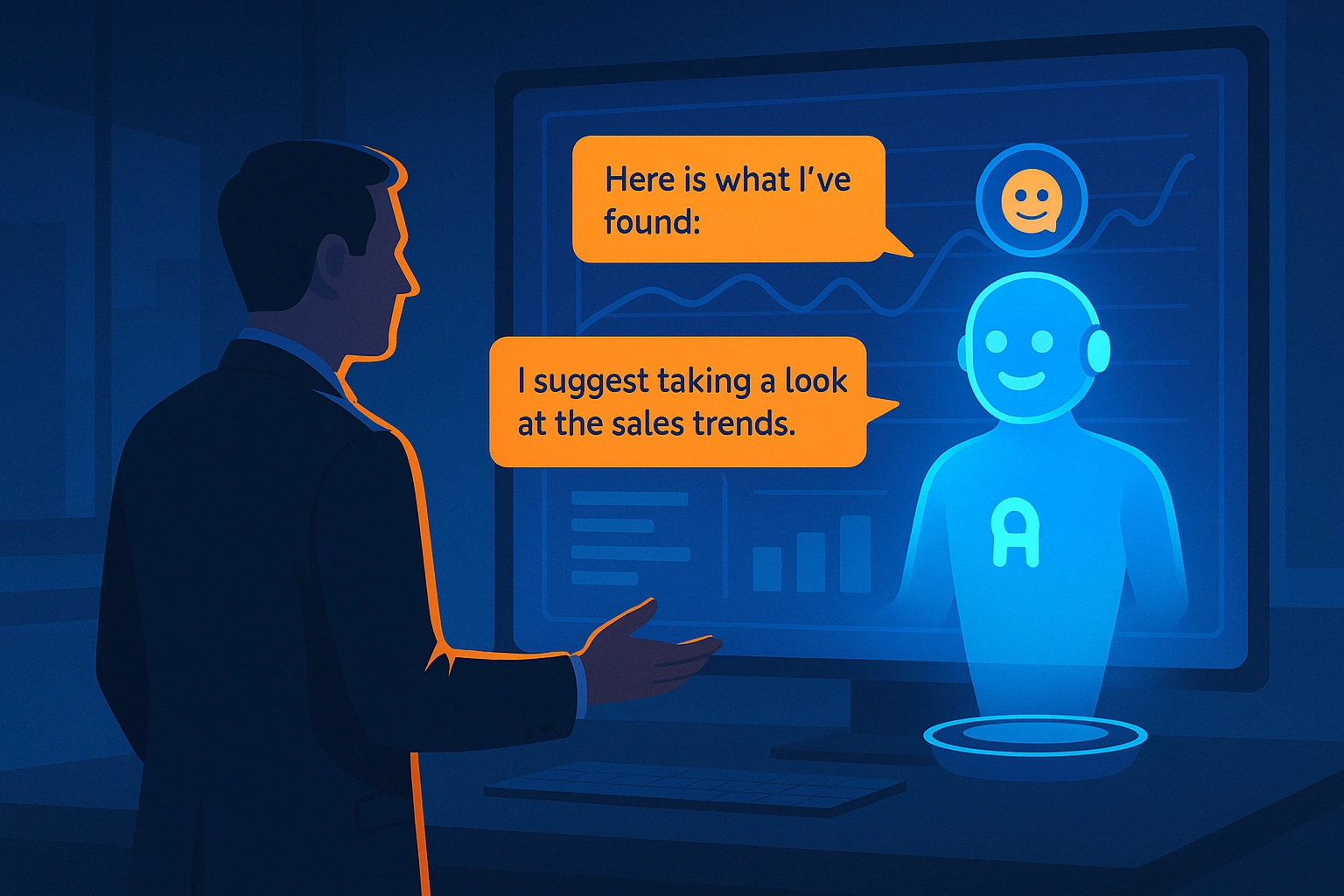
🧠 AI-Enhanced Engagement via Conversational Assistant
Navigating analytics can be daunting. That’s why this platform integrates seamlessly with an AI-powered assistant—an intelligent guide that:
- Helps interpret dashboards in plain language
- Offers suggestions for additional data slices
- Can be embedded into websites or portals for external users
- Acts as an always-on data concierge for business teams
The result? More questions answered. More teams enabled. More time for strategy.
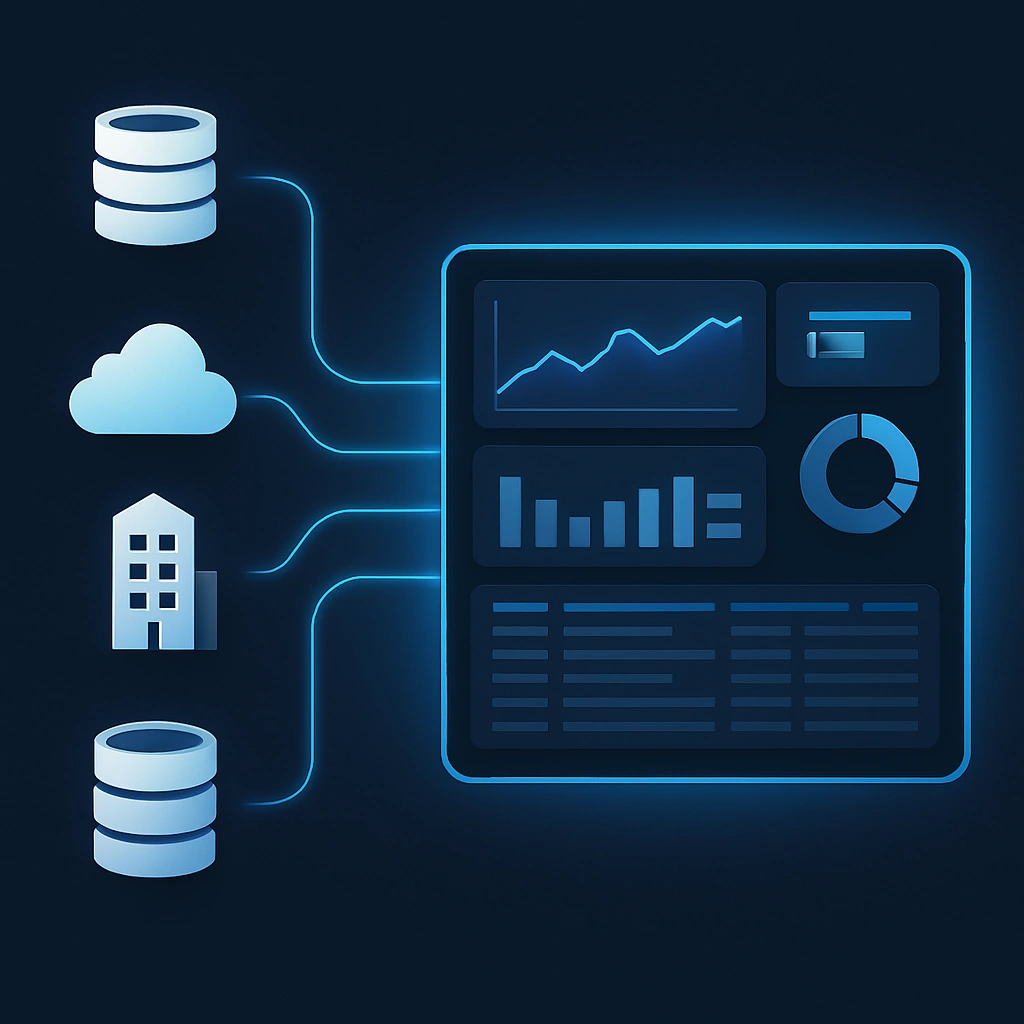
🔌 Seamless Connectivity to All Your Data Sources
Whether your data lives in cloud databases, data warehouses, or legacy systems, this platform speaks the language of your entire data ecosystem. It connects natively with your structured data sources and allows unified querying from a single interface.
No more copying spreadsheets between tools. No more juggling credentials. Just instant access to what matters.
🎯 Key Business Outcomes
🌟 Ideal Use Cases
🔐 Built for the Enterprise
📈 The Future of Data Is Here
🎯 Key Business Outcomes

🎯 Key Business Outcomes
- ✅ Faster decision cycles — less dependency on analysts
- ✅ Deeper insights — via drill-down, filtering, and trend tracking
- ✅ Higher team alignment — shared dashboards, real-time updates
- ✅ Enhanced customer experience — with embedded, branded visualizations
- ✅ Scalable insights culture — from executives to operations
🌟 Ideal Use Cases
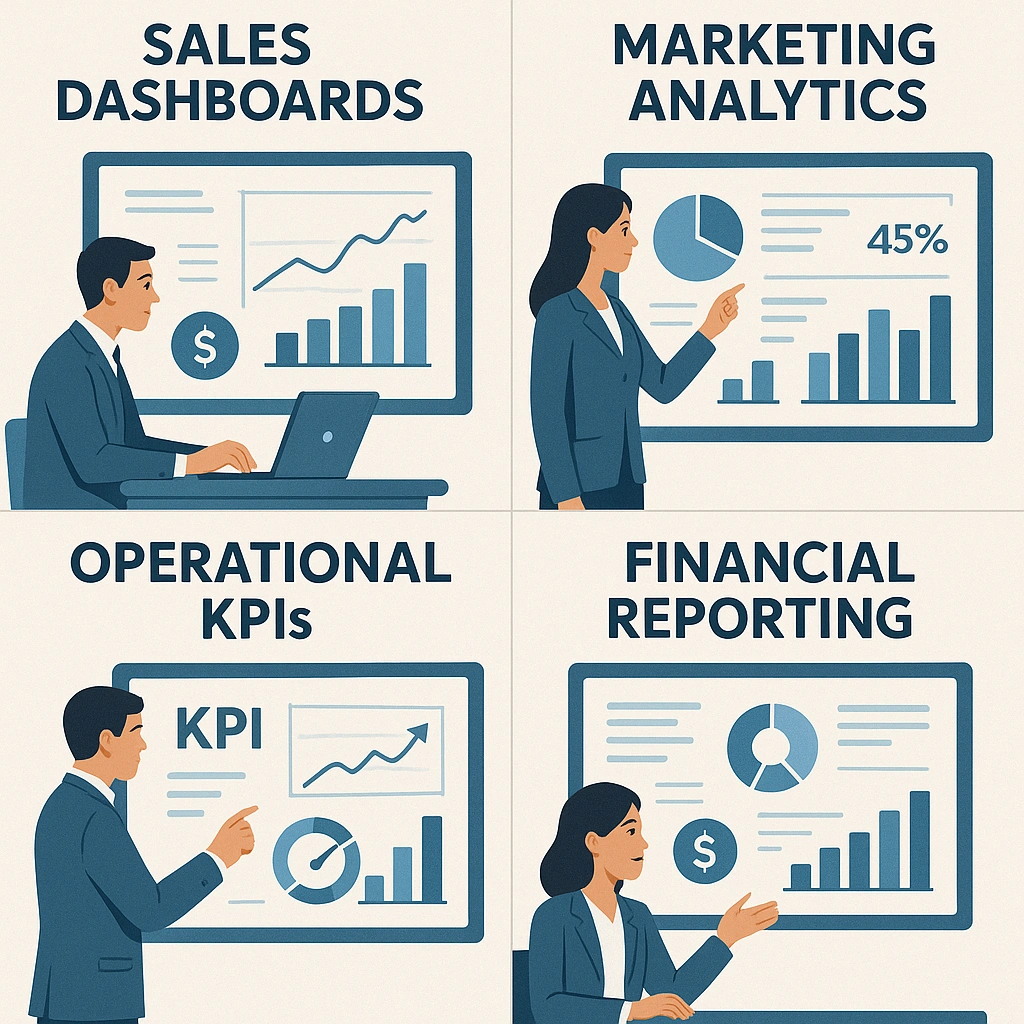
🌟 Ideal Use Cases
- Sales Leadership: Monitor funnel movement, territory performance, and conversion ratios
- Marketing Executives: Track campaign effectiveness, channel ROI, and engagement heatmaps
- Operations Teams: Visualize bottlenecks, inventory levels, and on-time metrics
- Finance Teams: Create up-to-date financial summaries, forecasts, and spend analyses
All with zero code. Zero IT bottlenecks. Zero lag.
🔐 Built for the Enterprise
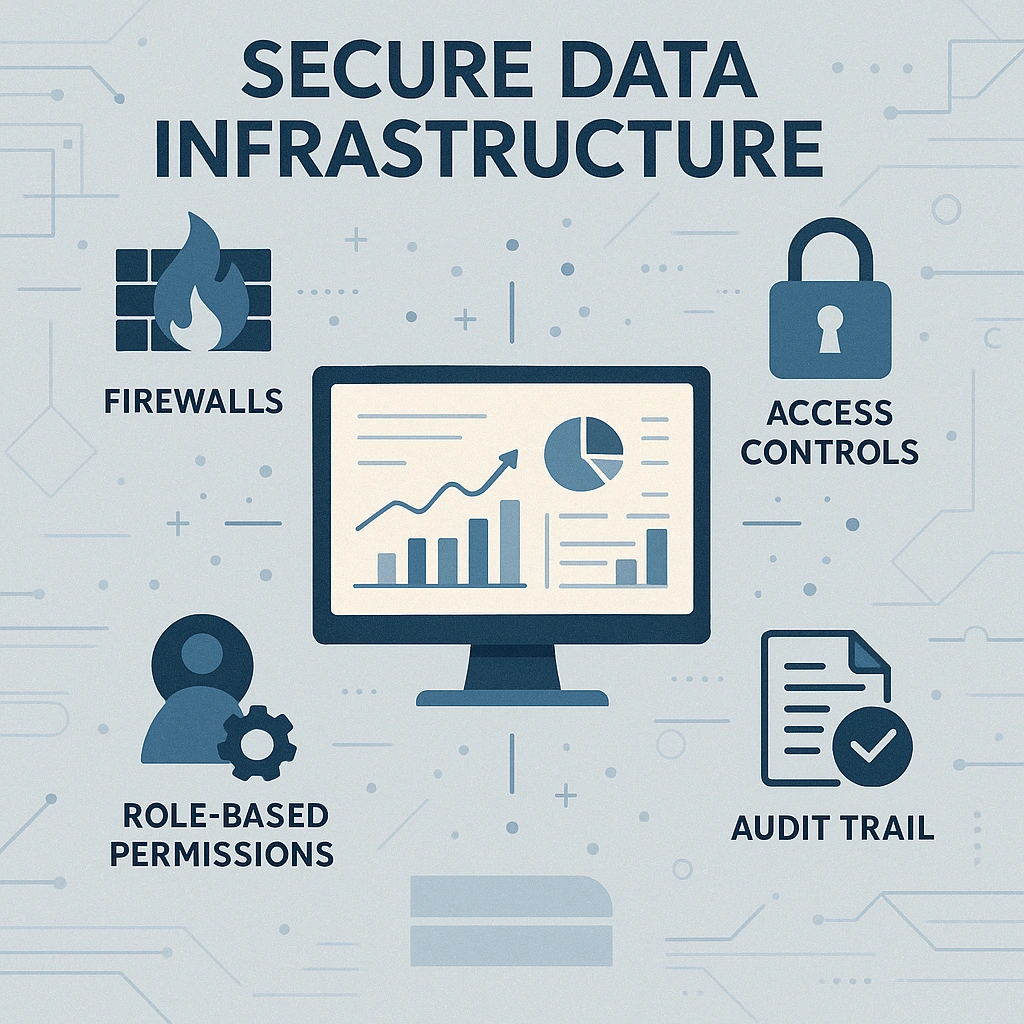
🔐 Built for the Enterprise
Security and governance are foundational. This solution includes:
- Audit logging for dashboard changes
- Fine-grained data-level permissions
- Scalable deployment across teams and geographies
Whether you’re a startup scaling fast or an enterprise managing complexity, the platform grows with you.
📈 The Future of Data Is Here

📈 The Future of Data Is Here
In today’s competitive landscape, being data-driven isn’t just an advantage—it’s table stakes. But becoming data empowered? That’s the real differentiator.
This data exploration platform provides the tools, interfaces, and intelligence to make every user a confident decision-maker. With visual storytelling, AI support, and real-time access, your business doesn’t just see the future—it builds it.
Empower your team. Unlock your data. Drive smarter outcomes.
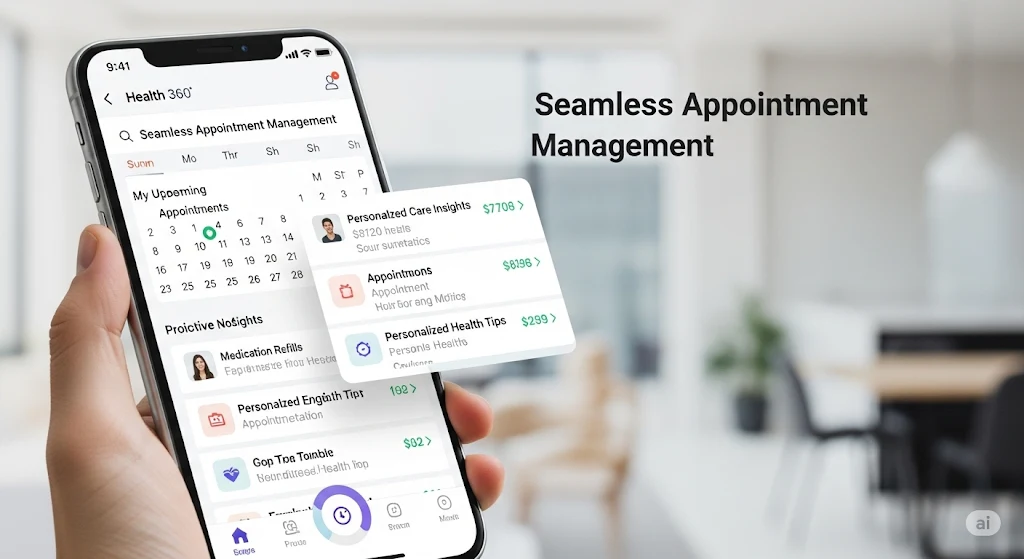
Health 360: Redefining Patient Engagement and Care Management
Transforming Care, Empowering Every Interaction
In today’s dynamic healthcare ecosystem, digital transformation is no longer optional—it’s imperative. The Health 360 App exemplifies how intelligent healthcare platforms can elevate the patient experience through seamless appointment management, personalized care insights, and proactive engagement. Designed for modern health institutions, this solution simplifies the complexities of patient-provider interactions while enhancing clinical coordination.
💡Let’s explore the full spectrum of capabilities that make Health 360 a cornerstone for digital health engagement.
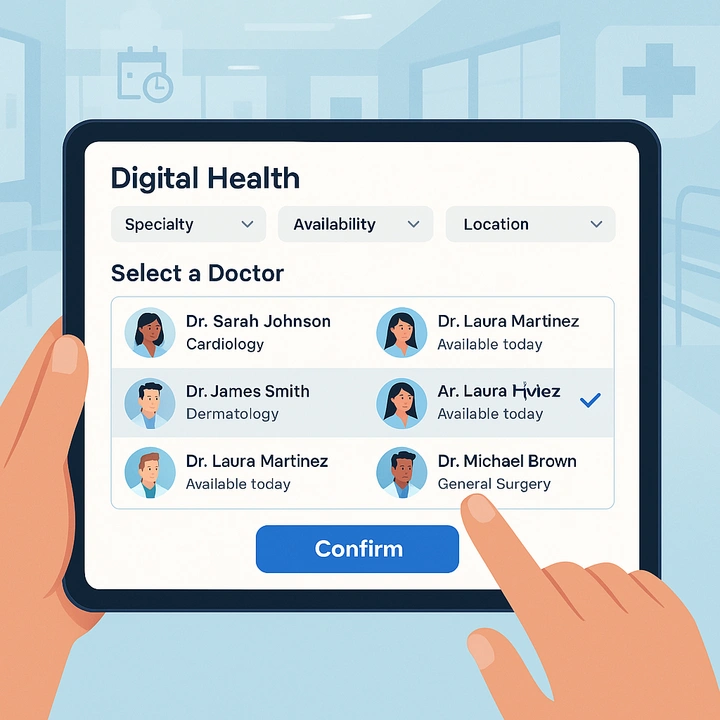
🔹 Smart Appointment Booking
🔹 Smart Appointment Booking
Streamlined Scheduling with Real-Time Access
Health 360 introduces an intuitive and dynamic appointment booking mechanism that allows patients to select physicians, care teams, or facilities based on multiple intelligent filters. The system leverages real-time availability and historical patient preferences to ensure bookings are fast, relevant, and frictionless. Patients can view open slots, select preferred timeframes, and instantly confirm appointments—all from a single unified interface. Whether routine checkups or specialist consultations, every scheduling interaction is optimized for speed and accuracy.
Business Impact: Reduces call center load, improves patient satisfaction, and increases schedule adherence rates through digital-first interactions.
Health 360 introduces an intuitive and dynamic appointment booking mechanism that allows patients to select physicians, care teams, or facilities based on multiple intelligent filters. The system leverages real-time availability and historical patient preferences to ensure bookings are fast, relevant, and frictionless. Patients can view open slots, select preferred timeframes, and instantly confirm appointments—all from a single unified interface. Whether routine checkups or specialist consultations, every scheduling interaction is optimized for speed and accuracy.
Business Impact: Reduces call center load, improves patient satisfaction, and increases schedule adherence rates through digital-first interactions.
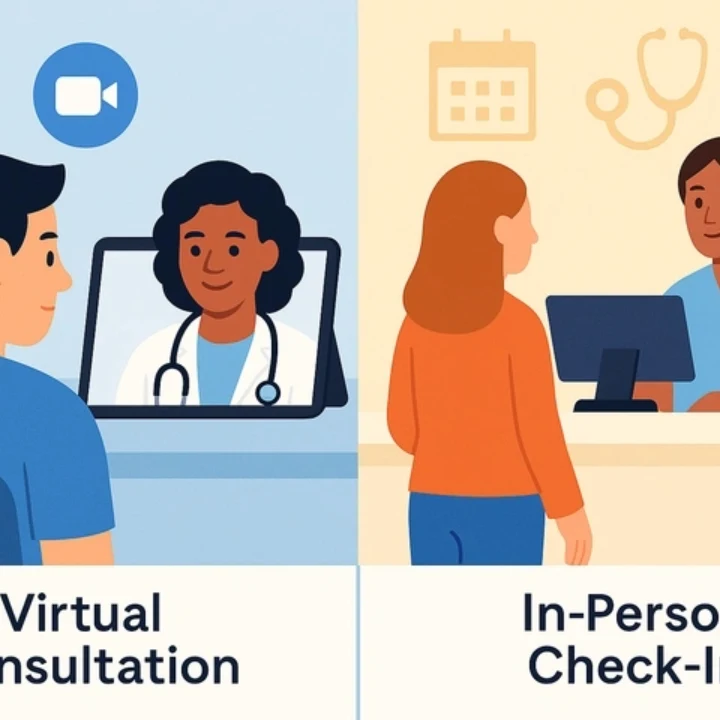
🔹 Multiple Appointment Types (Virtual and In-Hospital)
🔹 Multiple Appointment Types (Virtual and In-Hospital)
Hybrid Care Delivery at Scale
Healthcare is no longer confined to four walls. With Health 360, organizations offer both in-person and virtual appointment options, supporting diverse patient preferences and healthcare delivery models. This hybrid functionality ensures that access to care remains uninterrupted—regardless of geography or mobility constraints. Patients receive clear guidance on whether a service is available virtually or onsite. Integrated video consultation capabilities ensure that virtual visits are as effective and secure as physical ones.
Business Impact: Enhances accessibility, supports remote care models, and maximizes clinical reach across patient populations.
Healthcare is no longer confined to four walls. With Health 360, organizations offer both in-person and virtual appointment options, supporting diverse patient preferences and healthcare delivery models. This hybrid functionality ensures that access to care remains uninterrupted—regardless of geography or mobility constraints. Patients receive clear guidance on whether a service is available virtually or onsite. Integrated video consultation capabilities ensure that virtual visits are as effective and secure as physical ones.
Business Impact: Enhances accessibility, supports remote care models, and maximizes clinical reach across patient populations.
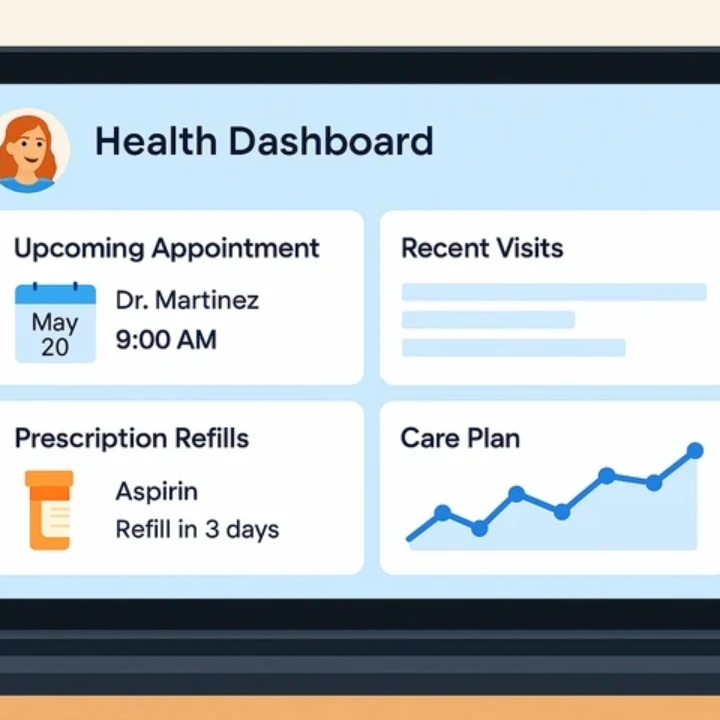
🔹 Personalized Health Dashboard
🔹 Personalized Health Dashboard
One Unified View of Health
The Health Dashboard serves as a real-time control center for patients, offering a consolidated view of all critical health-related touchpoints. From upcoming appointments and prescription histories to recent visits and customized care plans, the dashboard delivers actionable insights tailored to each patient’s health journey. Behind the scenes, a robust data architecture aggregates and surfaces relevant clinical and operational data, enabling proactive decision-making and self-service health management.
Business Impact: Empowers patients with transparency, reduces administrative dependencies, and promotes adherence to care protocols.
The Health Dashboard serves as a real-time control center for patients, offering a consolidated view of all critical health-related touchpoints. From upcoming appointments and prescription histories to recent visits and customized care plans, the dashboard delivers actionable insights tailored to each patient’s health journey. Behind the scenes, a robust data architecture aggregates and surfaces relevant clinical and operational data, enabling proactive decision-making and self-service health management.
Business Impact: Empowers patients with transparency, reduces administrative dependencies, and promotes adherence to care protocols.
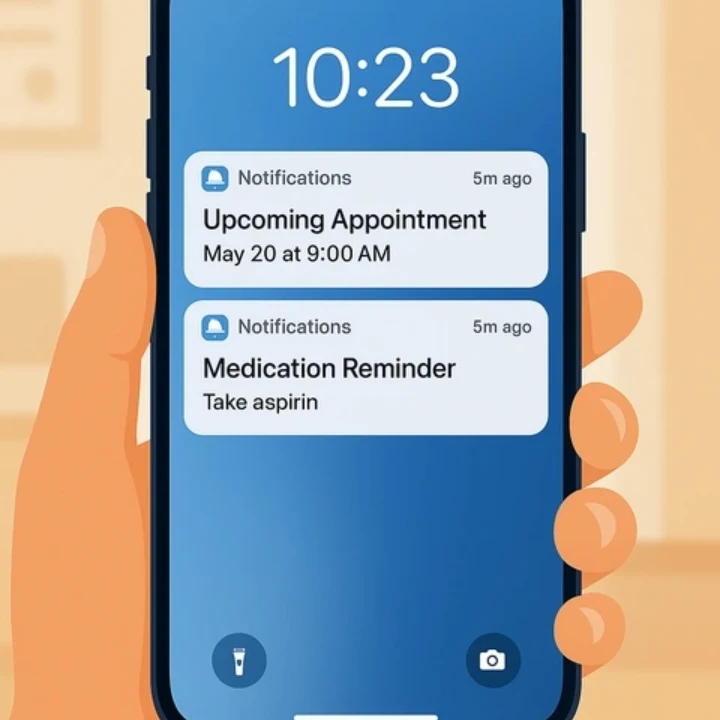
🔹 Automated Notifications & Reminders
🔹 Automated Notifications & Reminders
Proactive Engagement that Drives Adherence
Health 360 features intelligent engagement tools that send automated reminders for appointments, medication schedules, and follow-up visits. These nudges are context-aware—customized based on individual timelines, treatment plans, and clinician instructions. Notifications are delivered across preferred channels, ensuring timely outreach and reducing no-show rates. The automation framework behind these alerts enables configurable communication flows tailored to specific patient segments and scenarios.
Business Impact: Improves patient compliance, minimizes missed appointments, and boosts operational efficiency through automation.
Health 360 features intelligent engagement tools that send automated reminders for appointments, medication schedules, and follow-up visits. These nudges are context-aware—customized based on individual timelines, treatment plans, and clinician instructions. Notifications are delivered across preferred channels, ensuring timely outreach and reducing no-show rates. The automation framework behind these alerts enables configurable communication flows tailored to specific patient segments and scenarios.
Business Impact: Improves patient compliance, minimizes missed appointments, and boosts operational efficiency through automation.

🔹 User-Friendly Interface
🔹 User-Friendly Interface
Frictionless Design for Diverse User Demographics
Recognizing the diversity in digital literacy among patients, Health 360 emphasizes a clean, accessible, and intuitive user experience. Every screen is optimized for clarity, speed, and responsiveness—across devices and platforms. From initial login to appointment confirmation, the journey is designed to minimize cognitive load and enhance usability for users of all ages and backgrounds.
Business Impact: Increases portal adoption, enhances patient satisfaction, and ensures equitable access to digital health services.
Recognizing the diversity in digital literacy among patients, Health 360 emphasizes a clean, accessible, and intuitive user experience. Every screen is optimized for clarity, speed, and responsiveness—across devices and platforms. From initial login to appointment confirmation, the journey is designed to minimize cognitive load and enhance usability for users of all ages and backgrounds.
Business Impact: Increases portal adoption, enhances patient satisfaction, and ensures equitable access to digital health services.
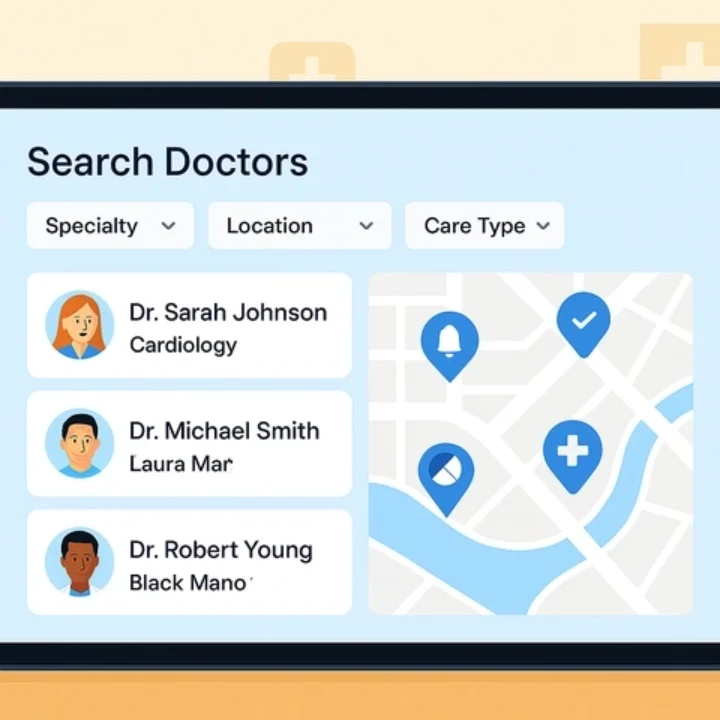
🔹 Comprehensive Doctor Search
🔹 Comprehensive Doctor Search
Precision Matching for Patient Needs
Finding the right care provider is central to health outcomes. Health 360 empowers patients to search for doctors based on specialty, subspecialty, location, and even care team affiliations. A robust search algorithm filters results based on patient inputs and preconfigured provider criteria. Integrated maps and facility metadata further assist in identifying optimal matches, ensuring patients are paired with the most suitable professionals for their unique care needs.
Business Impact: Enhances provider discovery, accelerates the decision-making process, and improves clinical alignment.
Finding the right care provider is central to health outcomes. Health 360 empowers patients to search for doctors based on specialty, subspecialty, location, and even care team affiliations. A robust search algorithm filters results based on patient inputs and preconfigured provider criteria. Integrated maps and facility metadata further assist in identifying optimal matches, ensuring patients are paired with the most suitable professionals for their unique care needs.
Business Impact: Enhances provider discovery, accelerates the decision-making process, and improves clinical alignment.
🧩 Underlying Platform Architecture
While the frontend delivers a seamless patient experience, the backend is powered by an enterprise-grade engagement and health data orchestration platform. It integrates with core EHR systems, provider directories, appointment scheduling engines, and longitudinal patient records—creating a 360-degree view of each patient’s care journey.
Security, compliance, and scalability are foundational, enabling healthcare organizations to confidently expand their digital front doors.
🔮 Conclusion: The Future of Patient-Centric Healthcare
Health 360 is more than just an app—it’s a strategic lever for digital health transformation. By unifying appointment scheduling, engagement, care navigation, and health intelligence into a single ecosystem, it positions healthcare providers to lead with empathy, precision, and agility.
Organizations adopting Health 360 are witnessing measurable gains in patient satisfaction, operational efficiency, and care continuity. The future of healthcare is integrated, intelligent, and patient-first—and Health 360 is leading the way.

